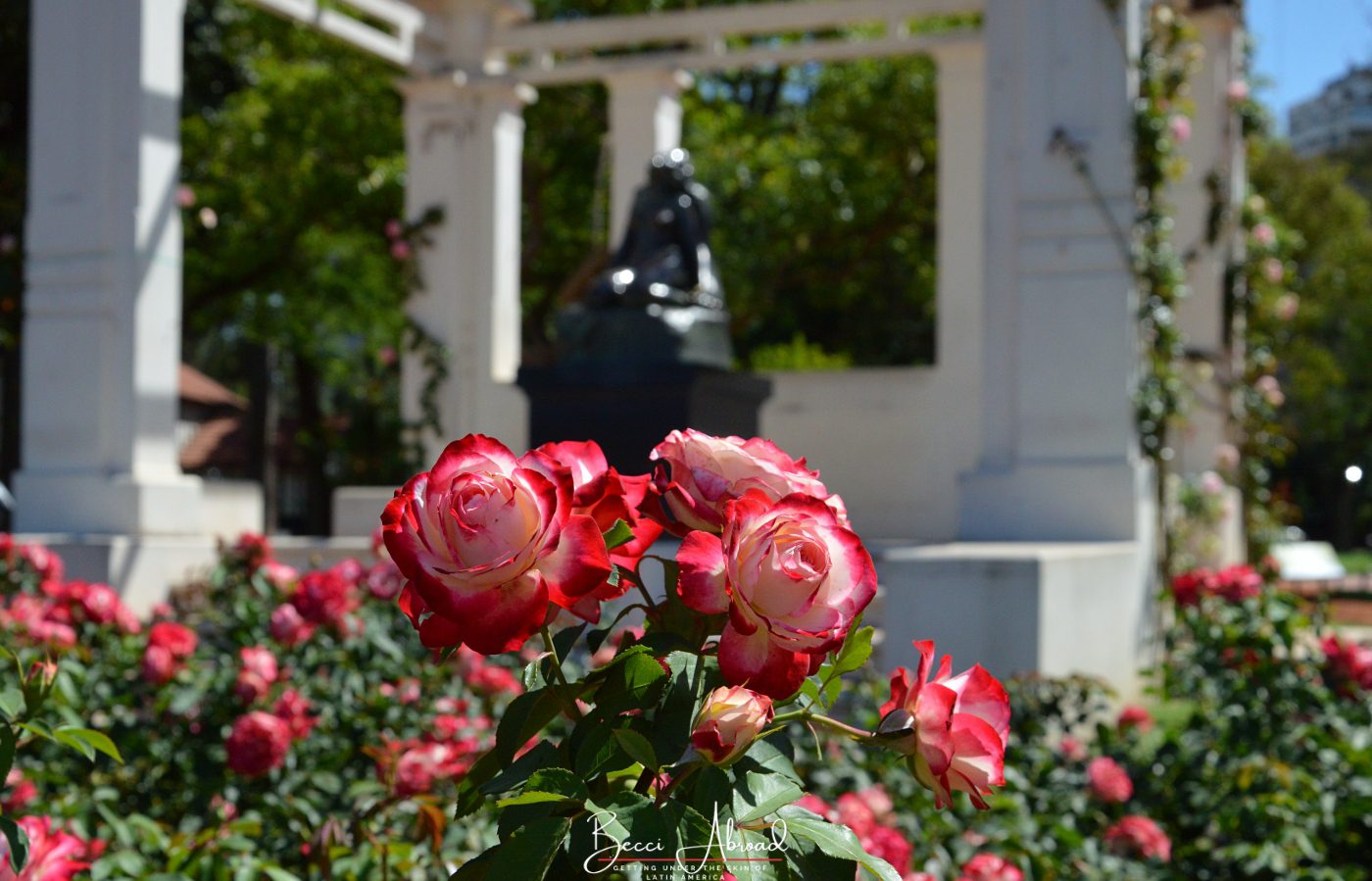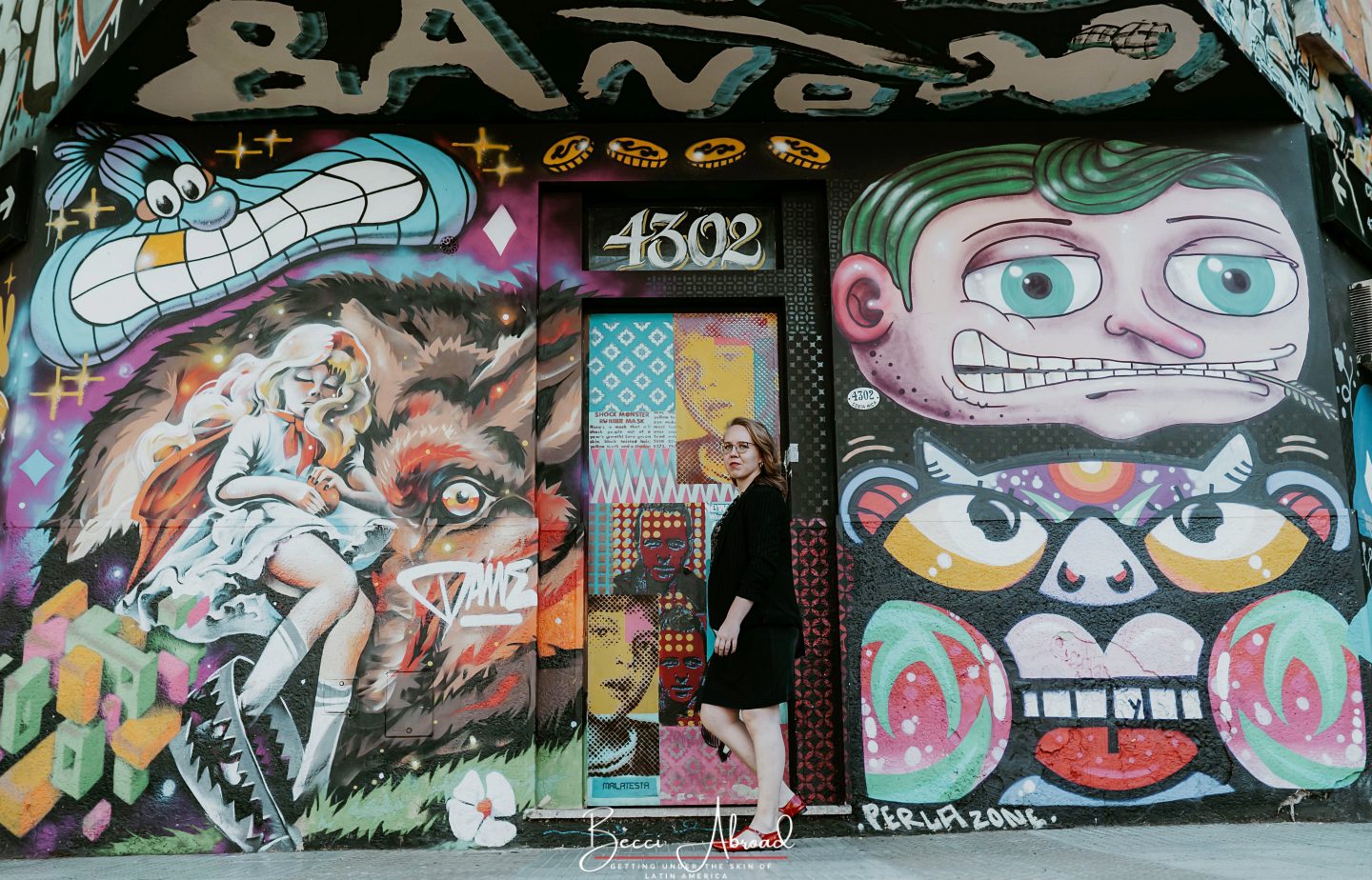The Best Things to Do in Buenos Aires for First-Timers
Buenos Aires is one of the most popular destinations in South America, and there are so many fascinating things to do in the Argentine capital!
From strolling down avenues like Avenida 9 de Julio and Avenida de Mayo and admiring the city’s European-style architecture and historic cafés to tango shows and joining a local family for an asado, a traditional Argentine barbacue dinner.
Actually, it can be quite overwhelming to figure out what the best things to do in Buenos Aires are when you are traveling to Buenos Aires for the first time!
And trust me, I know how you are feeling! Because I have been there myself!
I came to Buenos Aires in 2016 without knowing much about the city, and even less about what to do in Buenos Aires!
But I ended up staying, and I lived in Buenos Aires for a total of seven years!
During this time, I explored the city extensively, from the most popular landmarks and tourist attractions to the best hidden gems in Buenos Aires.
Today, I want to share my favorite 27 things to do in Buenos Aires if you are visiting the Argentina’s capital for the first time.
So, let’s get under the skin of Buenos Aires!
An Expat’s Guide to the Best Things to Do in Buenos Aires
Disclosure: Some of the links below are affiliate links. This means that at no additional cost to you, Becci Abroad will earn a commission if you purchase through one of those links. This helps to pay the bills and the maintenance of the site.
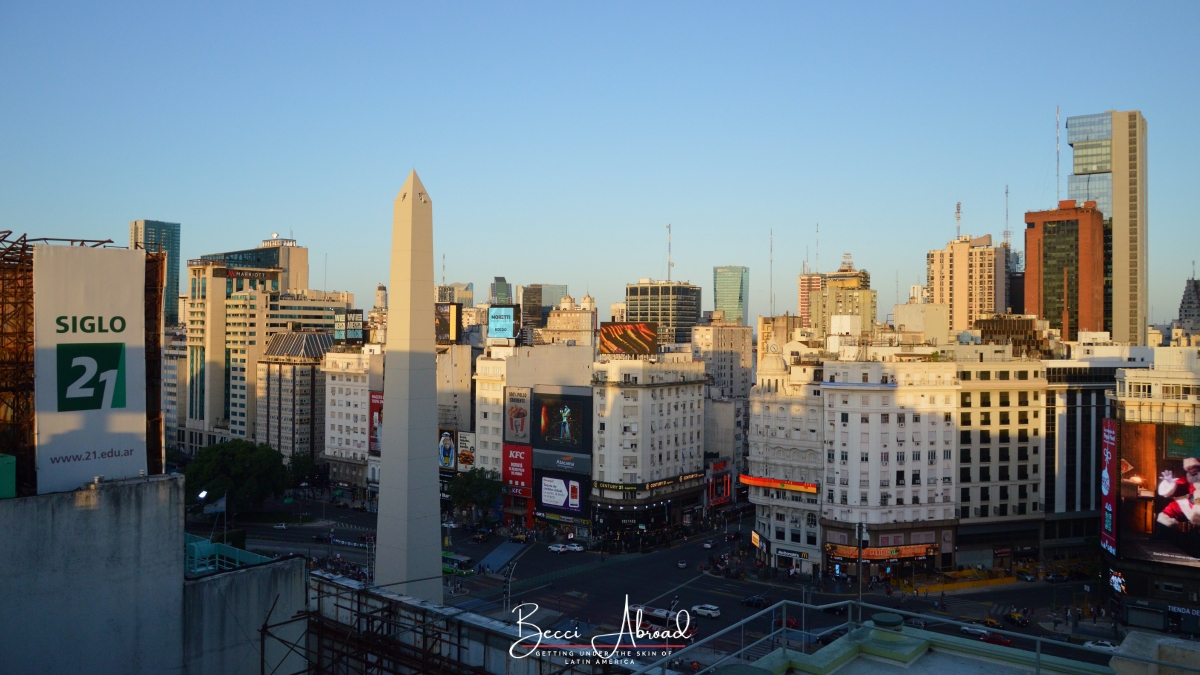
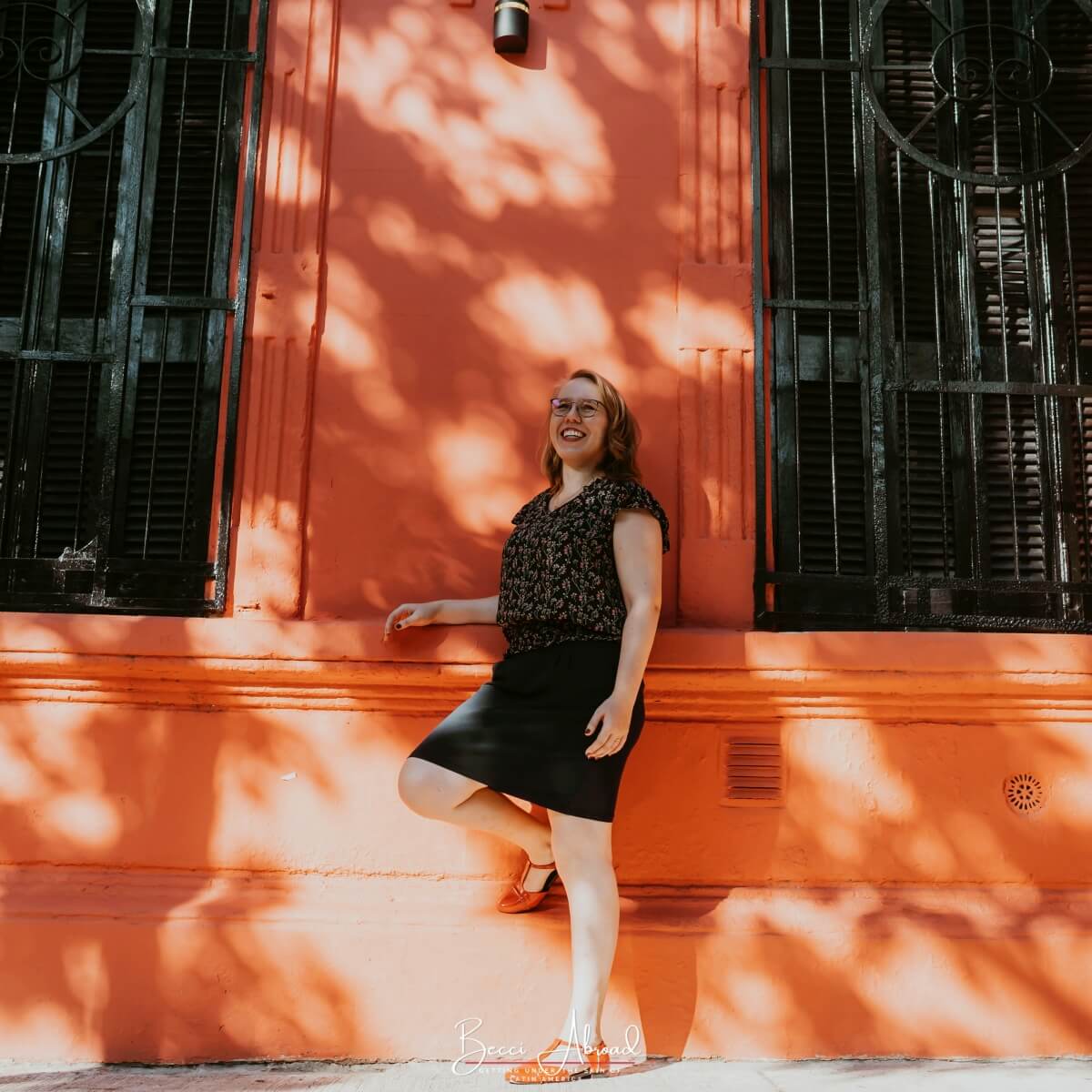

What to Do in Buenos Aires?
Buenos Aires is a city full of contrasts and many fascinating things to do!
This is a truly in-depth guide to the best things to do in Buenos Aires. Properly the most complete Buenos Aires guide I have ever done.
I hope my tips and tricks, and personal favorites, will help you get the most out of your stay and capture the spirit of the Argentine capital!
If you are short on time for your trip to Buenos Aires, I recommend you check out my Buenos Aires one-day itinerary.
Buenos Aires Map
Check out all the best things to do in Buenos Aires on this map. In the top right-hand corner, you can click on the full-screen icon and have the map open directly in your Google Maps app.
The Best Things to Do in Buenos Aires for First-Timers
Let’s explore the best things to do in Buenos Aires!
Take a Photo with the Casa Rosada
No visit to Buenos Aires is complete without making a photo stop by the iconic Casa Rosada!
La Casa Rosada, which best translates to the Pink House, is the presidential palace and executive office for Argentina’s president. The building gets its name from its pink-painted walls.
La Casa Rosada is located at the heart of Buenos Aires at the historic square, Plaza de Mayo. The square divides Buenos Aires’ oldest neighborhood, San Telmo, on one side and Buenos Aires’ finance district and downtown area, Microcentro, on the other side.
The impressive pink mansion has been the center of many important events throughout Argentina’s history, including presidents escaping from its roof!
And here we are not just talking about one president’s escaping from the roof of Casa Rosada! Actually, it has happened two times already. First time, in 1976, Isabel Perón departed the roof of Casa Rosada in a helicopter when the military coup removed her from office. And second time in 2001, Fernando de la Rúa left the Casa Rosada by helicopter, when he resigned amid the 2001-crisis in Argentina.
While you might not have heard about the presidents’ crazy roof-escapes from Casa Rosada, you are more likely to have seen the screen of Evita Perón speaking from the balcony of Casa Rosada.
Eva Perón, also commonly known as Evita, was Argentina’s First Lady under the first presidency of Juan Domingo Perón (1946-1955), and a very well-known moments in the Pink House’s history was when she addressed a massive crowd gathered at Plaza de Mayo.
The scene was later immortalized by Madonna’s portrayal of Evita in the movie “Evita”, which also features the super-popular song “Don’t Cry for Me, Argentina”. If you want to dig deeper and learn more about Evita Perón, there are tours about Evita and the Peronism Movement available in Buenos Aires.
The Pink House is closed to visitors, but you can still enjoy a quick photo shoot of the iconic building from the outside.
Casa Rosada and Plaza de Mayo are one of the absolute must-visit places in Buenos Aires if you’re visiting Buenos Aires for the first time!
Location: Plaza de Mayo, Buenos Aires



Learn the History of Plaza de Mayo
Plaza de Mayo is the large square located right in front of Casa Rosada, and it is one of the best places to visit in Buenos Aires to learn about the city’s history!
Plaza de Mayo translates to “the May Square” and is named to honor the May Revolution of 1810, which led to Argentina’s independence from the Spanish Empire.
Apart from the Casa Rosada, Plaza de Mayo also features many other important landmarks, such as Buenos Aires Cathedral (Catedral Metropolitana), the former Spanish town hall, known as el Cabildo, and the Argentine National Bank.
For the best views of Plaza de Mayo and the Pink House, head to the town hall museum, Museo Histórico Nacional del Cabildo y la Revolución de Mayo (open Wednesday through Sunday). Find your way to the balcony on the museum’s second floor for a beautiful view overlooking Plaza de Mayo.
On the ground around Plaza de Mayo, you will find small white painted scarves. The white scarf is a symbol of the local civic organization Mothers of Plaza de Mayo, or Madres de Plaza de Mayo in Spanish.
During the Argentine Dirty War in the 1970s, Plaza de Mayo gained global attention when a group of local women staged silent protests against the forced disappearances of their children and grandchildren by the Argentine military regime.
The Mothers of Plaza de Mayo is still a political group in Argentina today. You might sometimes see affiliated of the organization standing on Plaza de Mayo demanding answers to the thousands of still unsolved cases from the military dictatorship.
Plaza de Mayo is located in the center of Buenos Aires. The square is a great place from where you can explore different parts of the historical neighborhoods of Buenos Aires, or hop on a subway and explore other parts of Buenos Aires, such as Palermo or Belgrano.
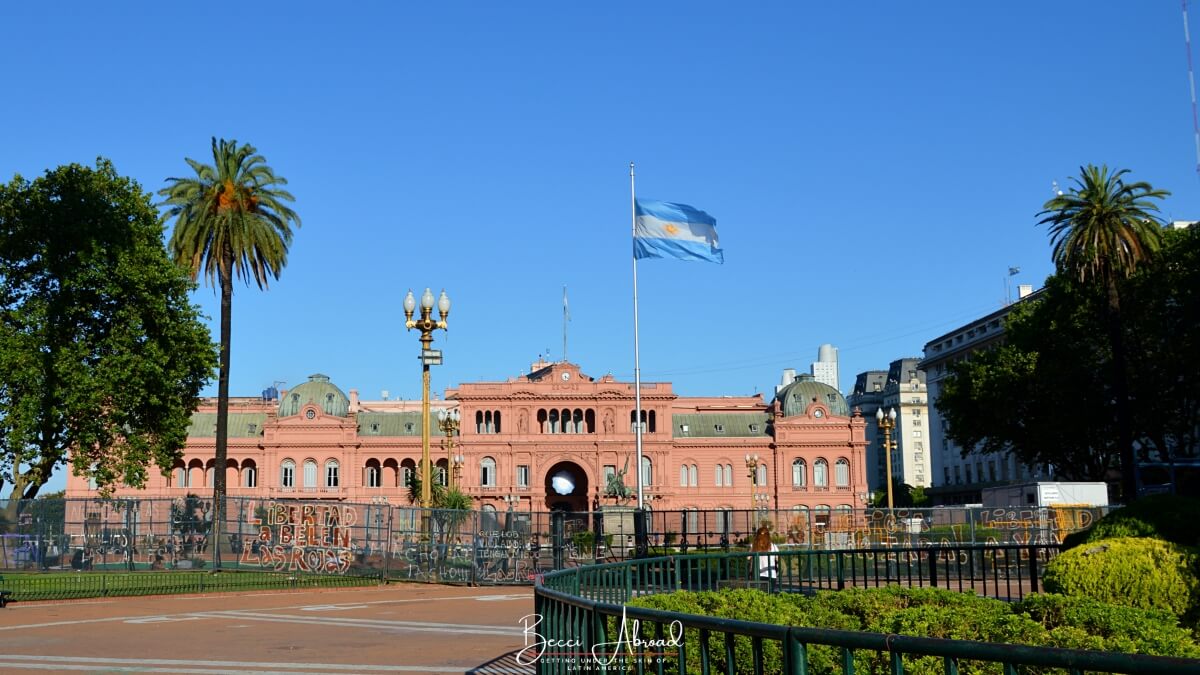
Get Spooked at the Recoleta Cemetery
The Recoleta Cemetery is one of the absolute best things to do in Buenos Aires, and I have been there many, many times during the years I lived in Buenos Aires!
Now you might think: really? Why should I visit a cemetery?
But trust me on this one! The Recoleta Cemetery is a truly unique place to visit in Buenos Aires!
The last time I visited the Recoleta Cemetery was together with two colleagues from the U.S. They were blown away by this mystical and spooky tourist attraction in Buenos Aires!
The Recoleta Cemetery dates back to 1822, and you can find more than 4,600 graves of some of Argentina’s most influential families.
At the cemetery, you will find Argentine presidents such as former president Raúl Alfonsín, governors, Nobel Prize winners, and independence fighters from Argentina’s War of Independence (1810-1818) against the Spanish Empire.
All are buried in beautifully decorated tombs and mausoleums in a labyrinthine of pathways that makes it feel more like an open-air museum than a cemetery.
One of the most visited graves at the Recoleta Cemetery is that of former First Lady, Evita Perón.
Evita’s grave is modest and can easily go unnoticed among the other more impressive graves in the cemetery. You can be sure to always find plenty of fresh flowers and tourists snapping photos around her grave.
The Recoleta Cemetery offers many interesting (and creepy) stories about Argentina’s wealth and influential families and their family tragedies.
I strongly recommend doing a guided tour of the Recoleta Cemetery to truly appreciate one of the absolute best things to do in Buenos Aires! During my time in Buenos Aires, I must have done a couple of tours of the Recoleta Cemetery, and all have been completely worth it!
The Recoleta Cemetery is one of the most popular places to visit in Buenos Aires, so it can be a good idea to buy the entrance in advance.
You can also purchase the tickets at the entrance to the cemetery. But I recommend purchasing the tickets in advance to avoid waiting in line, or the tickets being sell out.
The Recoleta Cemetery’s opening hours:
- Monday through Sunday: 9 am to 5 pm
Location: Recoleta Cemetery, Junin 11, Buenos Aires.
Book your Recoleta guided tour here (entrance ticket not included)


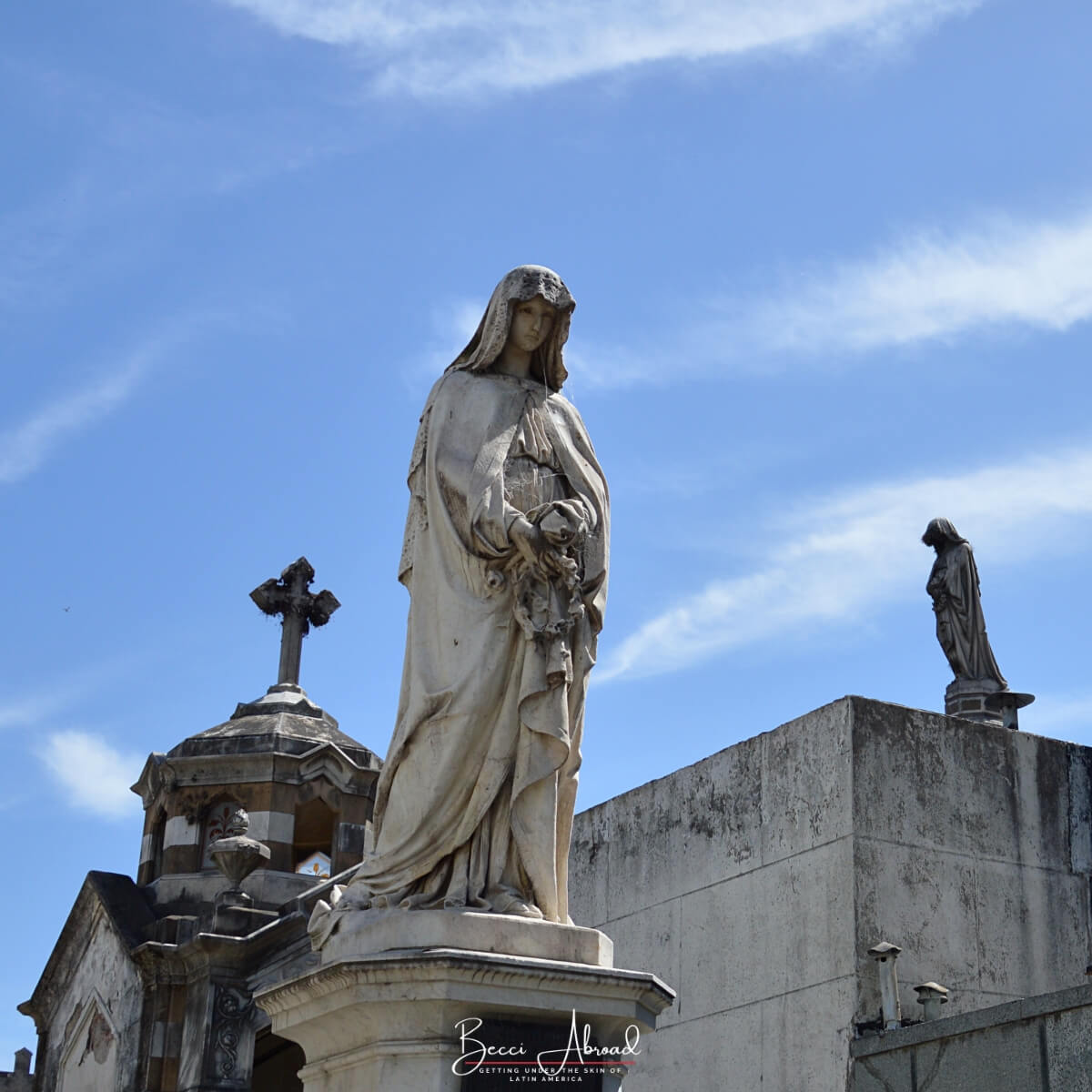
Take Photos of Buenos Aires’ Giant Metal Flower
Floralis Genérica is one of my favorite landmarks in Buenos Aires, and a perfect stop to make after visiting the Recoleta Cemetery!
Floralis Genérica is an aluminum sculpture of a gigantic flower that brings a contemporary touch to the historic Recoleta neighborhood in Buenos Aires.
Floralis Genérica, which best translates to “Generic Floral”, is a sculpture designed by Argentine architect Eduardo Catalano in 2002. Catalano donated the sculpture to the city of Buenos Aires as a tribute to all flowers.
The sculpture was meant to open its leaves up at sunrise and close them again at sunset like a real flower. But unfortunately, this function has not been operational for several years.
Under a huge storm in 2023, one of Floralis Genérica’s enormous leaves broke out. So, if you visit the sculpture today, it will look a bit different than my photos – at least, until the city government fixes it again!
While there isn’t much more to do than wander around the public park, Parque de las Naciones Unidas, where the sculpture is located, and take photos of and admire the giant metal flower, it is truly one of my favorite places to visit in Buenos Aires!
Floralis Genérica is also one of the best free things to do in Buenos Aires, so it will not break the bank to make a stop and admire this unique Buenos Aires landmark.
Location: Floralis Genérica, Parque de las Naciones Unidas, Avenida Presidente Figueroa Alcorta 2301, Recoleta
Explore the Floralis Genérica and other Buenos Aires Highlights with this top-rated private tour:
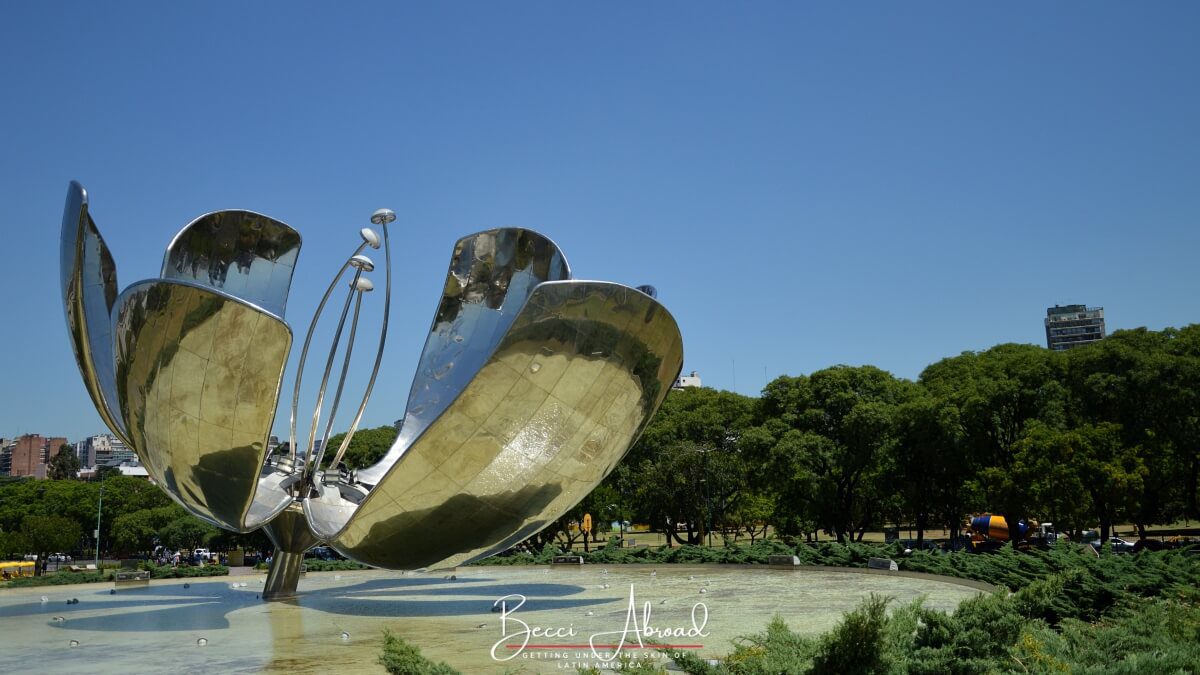
Climb the Guëmes Gallery for the Best Views of Buenos Aires
The Güemes Gallery’s viewpoint is an outdoor viewing platform with amazing views over Buenos Aires, and it is one of my absolute favorite things to do in Buenos Aires!
The Güemes Gallery, or Galería Güemes in Spanish, is a shopping arcade located in the heart of downtown Buenos Aires, close to Avenida Corrientes.
The Güemes Gallery was built between 1913 and 1915 in a beautiful Art Nouveau style that reflects the Argentine society’s huge inspiration and fascination for European architecture at the time.
While the shopping arcade is worth a visit for its impressive architecture, the star of the show is definitely the viewpoint!
The viewpoint of the Güemes Gallery is located on the 16th floor, and it truly feels like standing with Buenos Aires at your feet!
To access the viewpoint, you need to take the old elevator located in the arcade’s Mitre Tower (Torre Mitre in Spanish). Keep in mind that there are two towers inside the Güemes Gallery, so you need to make sure you take the Mitre Tower.
Take the elevator in the Mitre Tower up to the 14th floor to the viewpoint’s ticket office. From the ticket office, you need to climb the last two floors by stairs to the top of the dome.
Despite the need to climb the stairs, the view at the top is so breathtaking that it is definitely worth the effort!
There is a small entrance fee for visiting the Güemes Gallery’s viewpoint. Check the current entrance fee on the viewpoint’s website or book a guided tour including the viewpoint.
The Güemes Gallery’s viewpoint opening hours:
- Monday to Friday:
- 10 am to 1 pm
- 2 pm to 4:40 pm
- Closed on weekends
Location: Mirador Galería Güemes, Florida 165 (ticket office on the 14th floor of the Mitre Tower)
Learn more about the Güemes Gallery with a guided tour
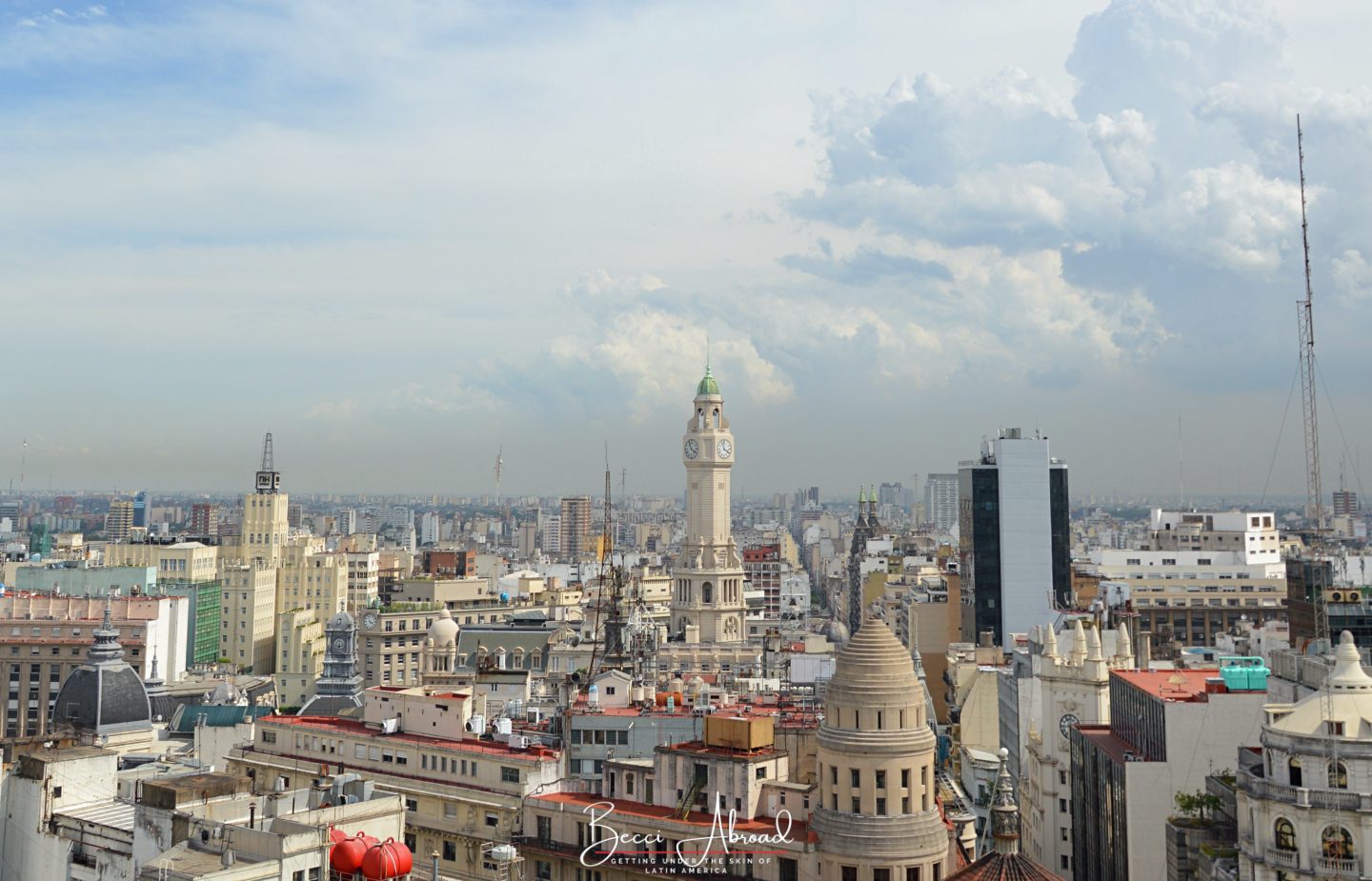
Try an Argentine Asado
Argentina is famous for its high-quality steaks, so no visit to Buenos Aires without trying an Argentine barbecue, also commonly known as asado in Argentine Spanish.
Asado is more than just a meal in Argentina; it is a cornerstone of Argentine culture and a social event that brings family and friends together. My husband can (if you let him) hold hours-long lectures about the importance of asado and how to prepare it properly.
Argentina’s barbecue traditions originate from the country’s rich gaucho, or cowboy, traditions, where the meat is slow-cooked over an open flame or grill.
The meat for an Argentine asado is only seasoned with salt (this is a very very important step if you ask my Argentine husband!).
After cooking, the meat is often served accompanied with chimichurri, a traditional Argentine herb sauce.
An asado is often served with a simple salad of lettuce and tomato and boiled or grilled potatoes. As starters, you might get choripanes sandwiches, small sandwiches with grilled chorizo sausages.
Throughout Buenos Aires, you can find many local steakhouses, called parrillas in Argentina, where you can order meat from an asado.
Fogón Asado is an unique high-end steakhouse located in Palermo, where you can try an Argentine asado. In 2025, Fogón Asado was included in the Michelin guide for Buenos Aires.
There are also many different cooking classes and asado experiences in Buenos Aires, where you can learn how to prepare a traditional Argentine asado:
- Betty & Marcelo Asado Experience – Betty & Marcelo are an Argentine couple who have opened their home in Palermo. Betty & Marcelo invite travelers to experience the true essence of Argentine asado, cooked at home and with everybody sharing in front of the open fire.
- Asado Adventure – A blend of a walking tour, a cooking class, and a dining experience run by Frank Almeida, an American living in Buenos Aires. Frank guides you through the culture around asado, how to properly prepare one, and, of course, sharing it among friends.
- The Asado Experience – A three hours hands on asado experience with premium Argentine meat and wines in a family residence in Belgrano.
Asado is such a cornerstone of Argentine culture, and one of the best things to do in Buenos Aires to immerse yourself in Argentina’s culinary traditions.
Book your Asado experience here
Wander the Colorful Streets of La Boca & El Caminito
The colorful neighborhood of La Boca and El Caminito Street are among the most popular things to do in Buenos Aires! But I honestly have a bit of a love-and-hate relationship with La Boca…
But La Boca is far from representative of what Buenos Aires looks like, and actually, the colorful houses are only a small part of the La Boca neighborhood.
La Boca is one of the most featured places in travel catalogs and commercials for Buenos Aires. You have properly already seen pictures of La Boca’s colorful houses when you started researching for your trip to Buenos Aires.
The iconic colorful houses in La Boca sit at the heart of La Boca’s tourist hub by El Caminito Street, a small cobblestone lane.
The local city government of Buenos Aires has designated the area of La Boca as a street museum because the area played an important role in city’s development during the late 19th century where Buenos Aires received large amounts of European immigrants. Many of the immigrants settled in the areas around San Telmo and La Boca.
The European immigrants who arrived in Buenos Aires at that time often had limited resources and made do with what they had at hand. The buildings in La Boca were created as tenements, also called conventillos. The constructions were very precarious and made of wood and sheets of metal.
There are many theories around why the houses in La Boca are so colorful. One theory is that the houses in La Boca were painted with leftover ship paint.
While another popular theory is that the houses were painted by Italian immigrants from Genoa, who were inspired by the colorful houses of their home city.
The love part of my love-and-hate relationship with La Boca is the area’s historical importance for Buenos Aires. There are so many interesting histories about European immigrants and their search for a new life in Argentina that could be told in La Boca…
Unfortunately, it just doesn’t come through this way! And here goes the hate part of my love-and-hate relationship with La Boca:
Today, La Boca is overfilled with souvenir shops, touristy and overpriced restaurants, and street performers posing for cheesy tango photos.
In my opinion, the area has, unfortunately, failed to communicate its historical significance, and La Boca and Caminito Street have gained the reputation of a bit of a tourist trap.
In the seven years I lived in Buenos Aires, I only visited La Boca twice. And never felt the need to visit it more. You will find very few locals who go to La Boca to hang out. Instad, locals meet up in Palermo and Belgrano.
Apart from Caminito Street, another popular landmark in La Boca is the local soccer stadium, La Bombonera. The stadium belongs to the local soccer club Boca Juniors, which is considered among the best soccer clubs in Argentina (together with their rival, River Plate).
If you are into soccer, you can visit La Bombonera stadium on guided tours. It is incredibly hard to get tickets for a soccer match at La Bombonera, so you have to be very lucky and start looking for the tickets well ahead of time.
In Buenos Aires, La Boca and the surrounding areas outside the touristy part have a reputation for being a not-so-safe area, so I would recommend you take a taxi or an Uber/Cabify to get there.
While you can visit El Caminito Street and the touristy area without a guide, I would recommend signing up for a guided tour of La Boca to learn more about the area’s interesting history.
Location: El Caminito, La Boca
Explore La Boca with a guided tour
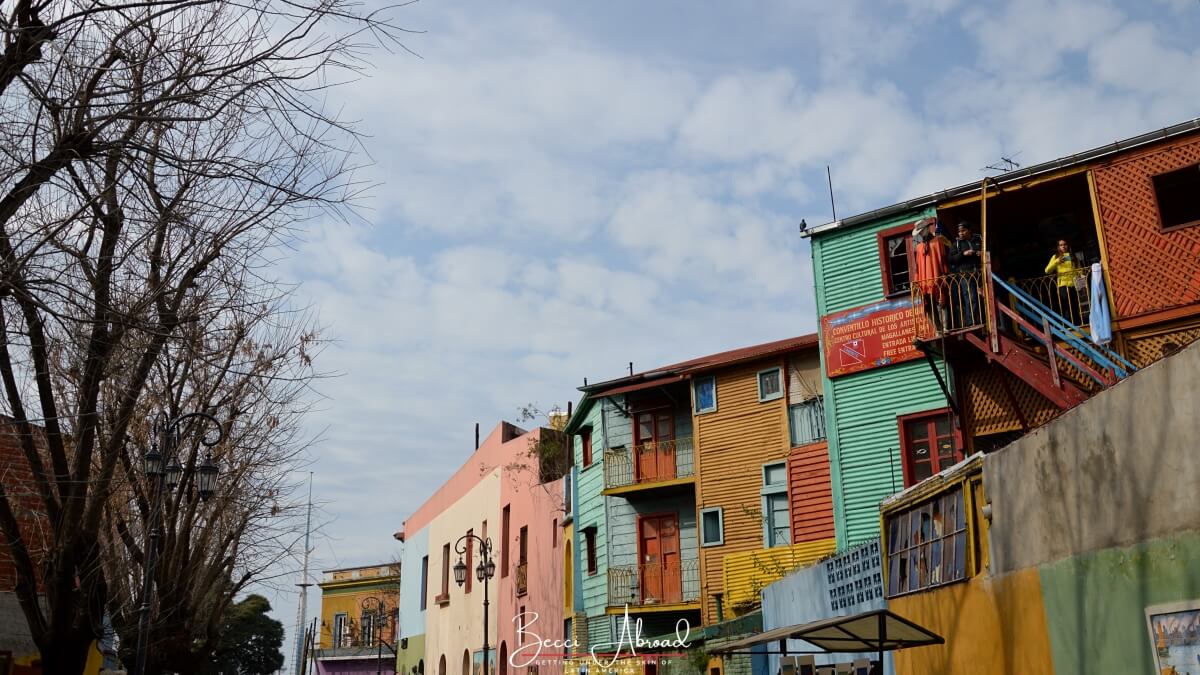

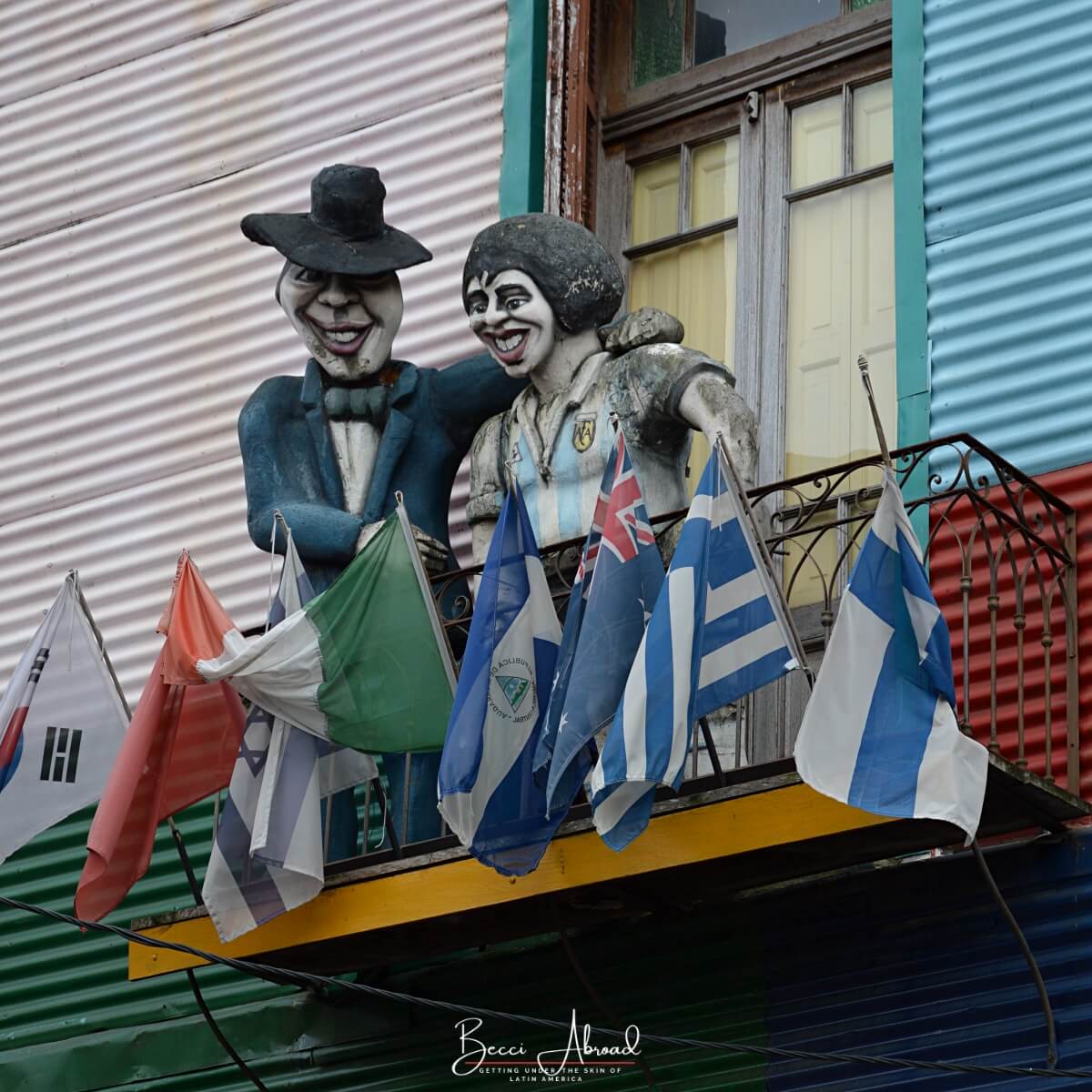
Visit El Ateneo Grand Splendid, the City’s Most Beautiful Bookstore
The Ateneo Grand Splendid is truly one of the best things to do in Buenos Aires – especially if you (like me) enjoy books and glamorous buildings!
The Ateneo Grand Splendid bookstore is housed in an old theater on Avenida Santa Fe in Buenos Aires’ Recoleta neighborhood.
The bookstore holds more than 120,000 copies, including books in English, and is considered one of the largest bookstores in Latin America.
What truly stands out is that the building still features the decorations and set-up from its theatrical past, with golden ornaments, balconies, and a stage with a red curtain.
On the stage area in the middle of Ateneo Grand Splendid, you will find a small bar with tables and chairs placed around the stage. It’s a perfect spot for grabbing a coffee and sitting down to enjoy the beautiful setting.
The building that houses Ateneo Grand Splendid opened as a theater in the 1920s, and the building changed venues several times over the years.
In the early 2000s, the building was transformed into a bookstore. Despite the changing venues, the original features and decorations from its days as a theater were retained.
The Ateneo Grand Splendid was crowned the world’s most beautiful bookstore by National Geographic and was number two on the Guardian’s list of most beautiful bookstores in the world!
It is free of charge to enter Ateneo Grand Splendid and browse around among the books, but, of course, you need to pay for anything you purchase at the bar.
The Ateneo Grand Splendid is one of the most extraordinary and unique bookstores I have ever visited, and needless to say that I have been visiting Ateneo Grand Splendid several times over my years in Buenos Aires!
I strongly recommend visiting Ateneo Grand Splendid as one of the most beautiful things to do in Buenos Aires!
El Ateneo Grand Splendid’s opening hours:
- Monday to Sunday: 9 am to 9 pm
Location: Avenida Santa Fe 1860, Recoleta
Explore the best of Buenos Aires’ bookstores
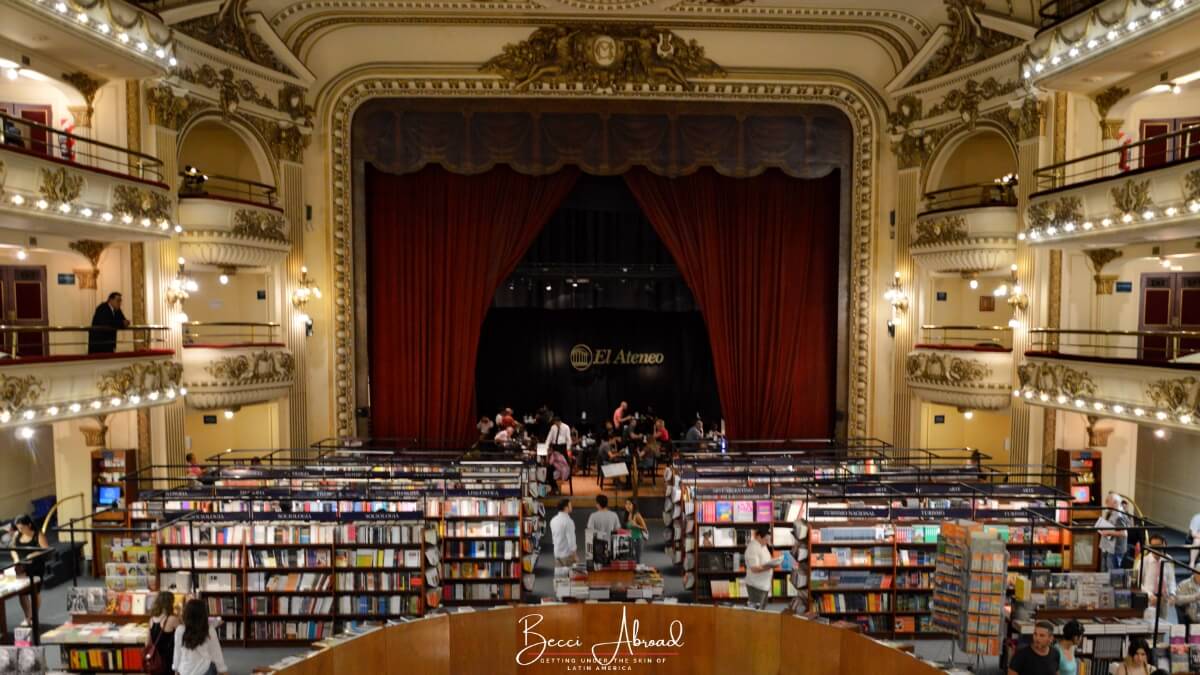
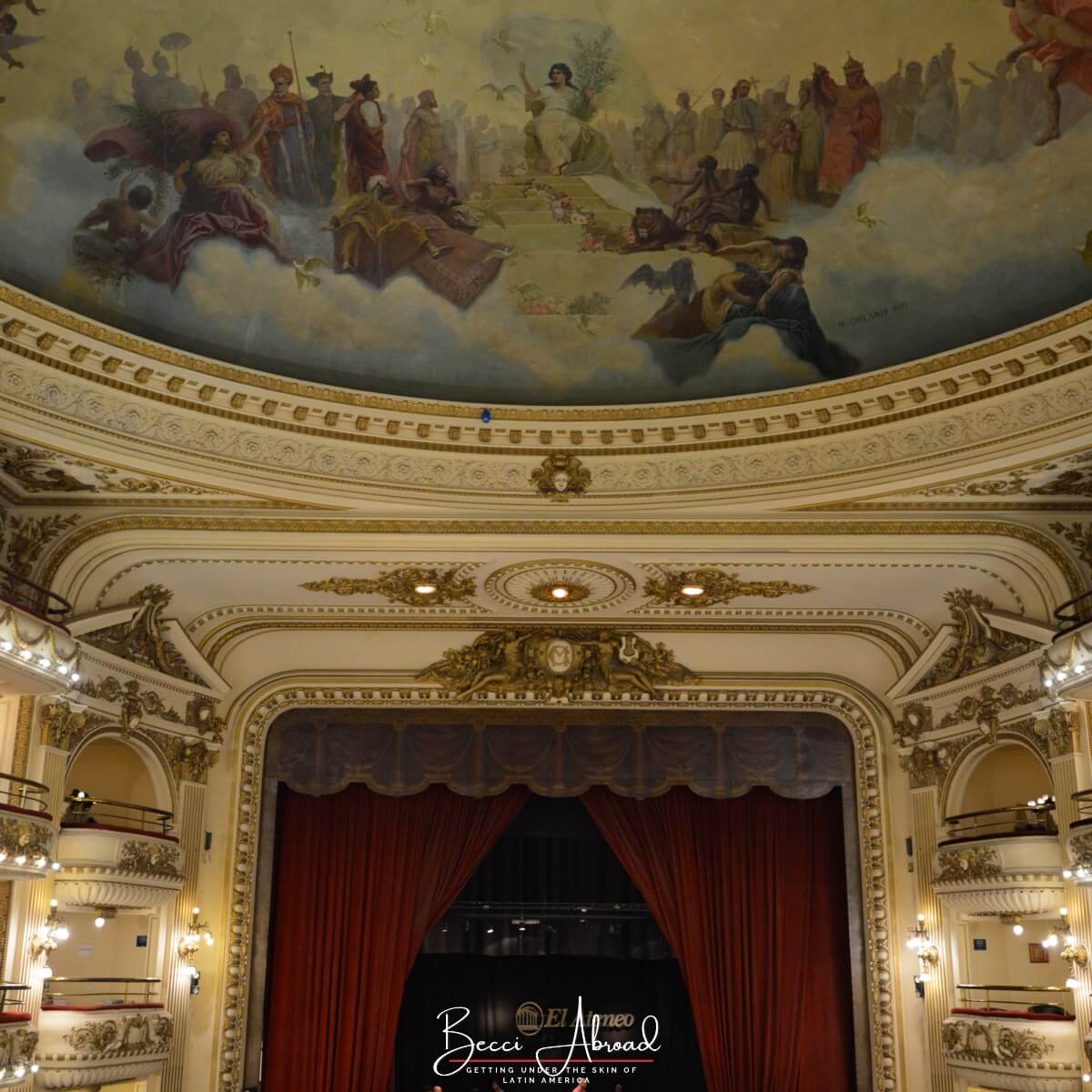

Wander San Telmo and Shop for Souvenirs at the San Telmo Market
San Telmo is Buenos Aires’ oldest neighborhood, and visiting the neighborhood and it’s popular Sunday Market is one of the most popular things to do in Buenos Aires.
San Telmo is known for its historical charm of colonial houses, historical coffee shops, cobblestone streets, and the popular San Telmo Sunday Market.
The San Telmo Market, also called Feria de San Telmo in Spanish, is a weekly street fair where you can find handicrafts, antiques, and souvenirs.
The San Telmo street fair takes place every Sunday at Calle Defensa, starting at Plaza de Mayo and running all the way down to Plaza Dorrego, a historical square at the heart of San Telmo.
Even if your Buenos Aires itinerary doesn’t include staying on a Sunday, there are plenty of things to do in San Telmo!
Here are some of the highlights in San Telmo:
- Watch a Tango Show – San Telmo is known for its important tango scene. You can catch a live tango show with professional tango dancers, for example, at El Viejo Almacén, or enjoy a live street tango performance at Plaza Dorrego.
- Visit a Museum – San Telmo houses both the Buenos Aires City Museum and a Modern Art Museum, Museo de Arte Moderno de Buenos Aires (MAMBA)
- Explore the Old Water Tunnels – The Zanjón de Granados museum offers guided tours of the city’s old underground water tunnels and you will learn more about the history of San Telmo.
- Visit Buenos Aires’ Narrow House – In San Telmo, you can find Buenos Aires’ most narrow house, Casa Mínima.
- Take a Photo with Mafalda – Mafalda is a popular Argentine cartoon character, and in San Telmo, you can visit and take a photo with a Mafalda sculpture.
Exploring San Telmo’s historical charm is one of the best things to do in Buenos Aires, and with a guided tour, you can learn a lot about the neighborhood:
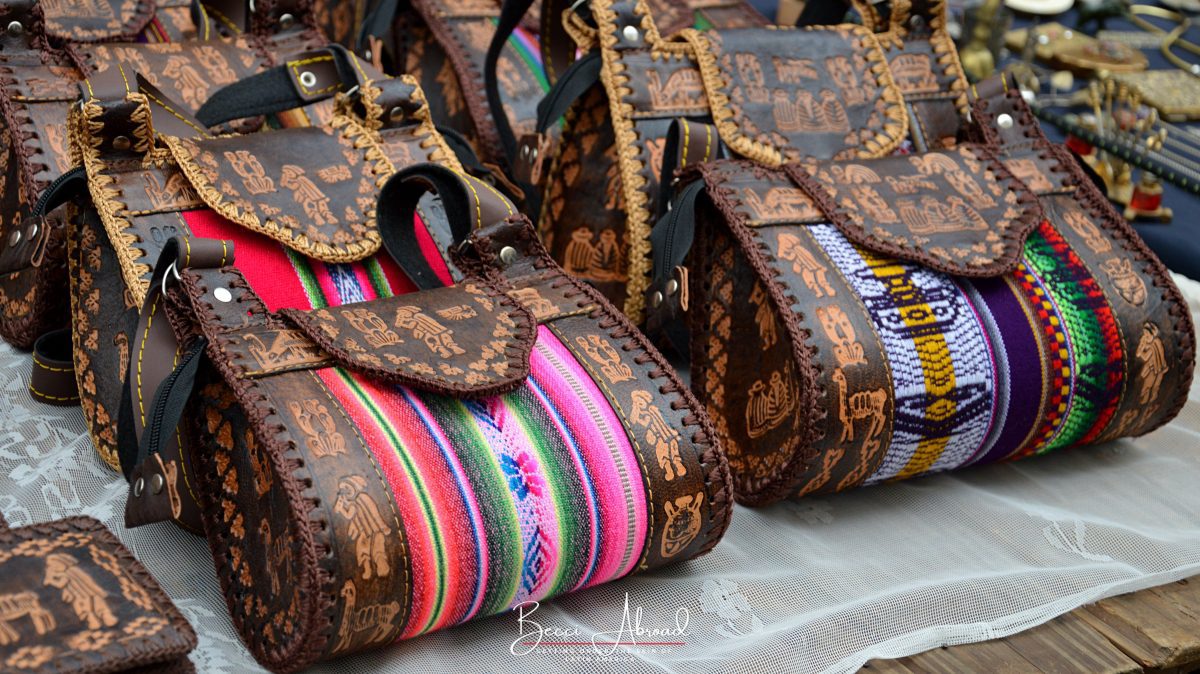


Taste Authentic Argentine Ice Cream
Ice cream in Buenos Aires is yuuummy, and tasting Argentine ice cream is definitely one of the best things to do in Buenos Aires if you want to experience the city like a local!
If you have traveled to Italy, you might think that you have tried great ice cream… But remember that Buenos Aires received many Italian immigrants during the 19th century!
Trust me, some of these Italian immigrants must have brought their best ice cream recipes with them to Argentina!
Throughout Buenos Aires, you will find many ice cream shops. In Spanish, ice cream is helado, and the local ice cream shops are known as heladerías.
Many of the ice cream shops advertise with helado artesanal, best translated as “artisanal ice cream” or “homemade ice cream” in English.
One of the most popular ice cream flavors in Buenos Aires is dulce de leche, the popular local caramel spread that Argentines use in all types of desserts!
I recommend that you give the flavor dulce de leche garantizado a try! That’s dulce de leche ice cream with chocolate chips!
Most ice cream shops in Buenos Aires have delicious ice cream, but here are some of my favorite ice cream shops:
- Rapanui – A local Bariloche-based brand with super yummy ice cream and a wide selection of chocolate!
- Freddo – The most popular ice cream brand in Argentina, with several ice cream shops in the entire city.
- Lucciano’s – A local ice cream brand with high-quality ice cream and many ice cream stores around Buenos Aires.
- Occo Helados – A boutique local brand with just a few shops around Buenos Aires, but one of my favorite ice cream places!
Porteños (the people of Buenos Aires) have a strong culture of ice cream, and it is common to order ice cream by the kilo. In most ice cream shops, you can order everything from a quarter kilo (un cuarto), half a kilo (medio kilo), and even one or two kilos (un kilo/dos kilos).
Trying Argentine ice cream is definitely one of the best things to do in Buenos Aires if you want to join the city like a local!

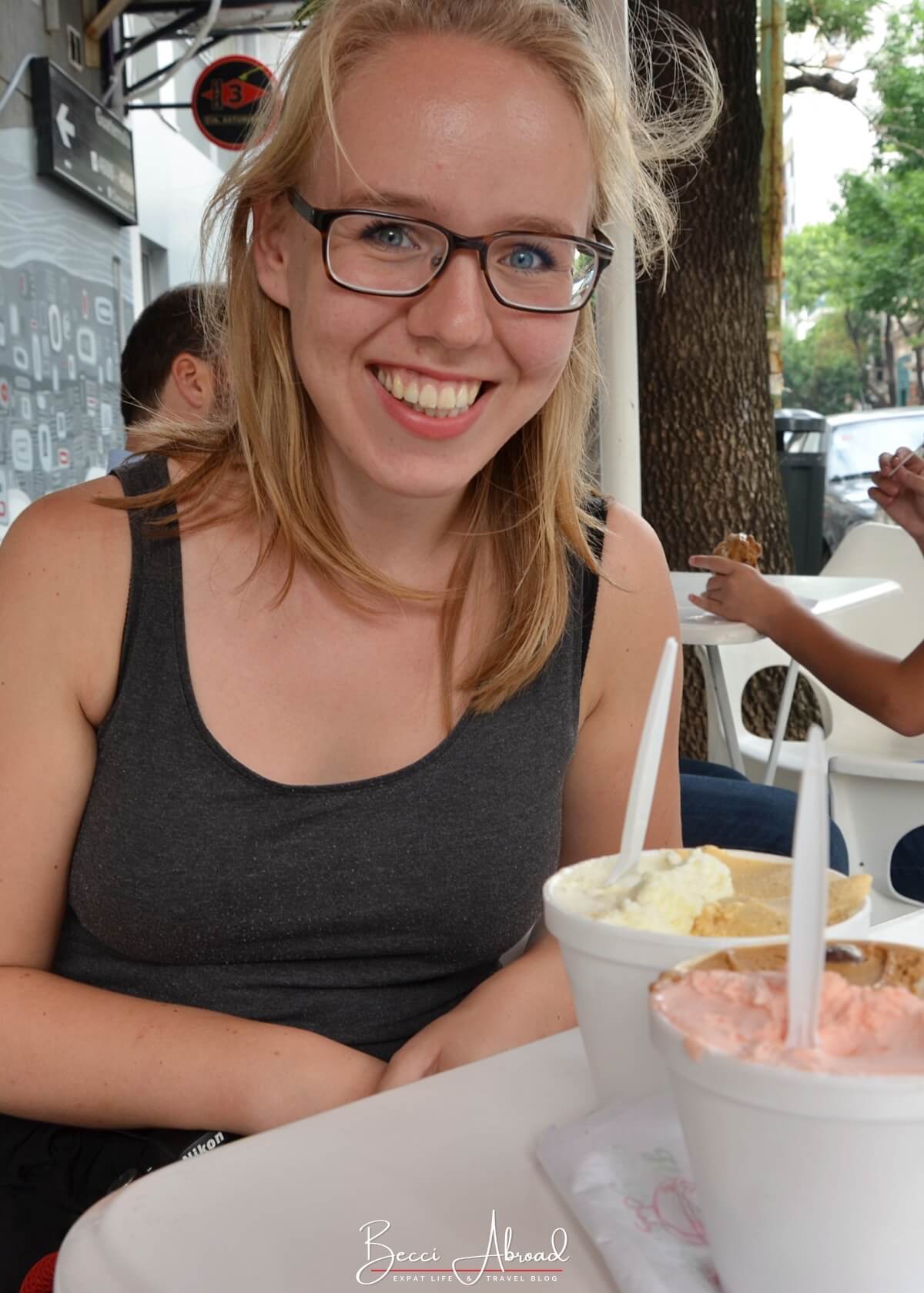

Walk Along the Waterfront at Puerto Madero
Puerto Madero is a modern and upscale district in Buenos Aires, located by Buenos Aires’ old habor with the old docks connecting to the Rio de la Plata.
The area is known for some of Buenos Aires’ few skyscrapers housing the offices of international businesses, high-end apartments, and restaurants.
Puerto Madero is located right behind the popular Casa Rosada, and is one of the few locations in Buenos Aires where you feel the city’s proximity to the river.
Puerto Madero dates back to 1882, and the area should have been part of an extension of the Buenos Aires Harbor. However, the area was poorly designed, and its shallow waters quickly made it obsolete for receiving ships.
Along the docks in Puerto Madero, you can still see the old red brick packhouses. The packhouse buildings have been modernized and are now used for high-end apartments and restaurants.
Along the waterfront in Puerto Madero, you will find many restaurants and bars, and it’s a popular place for locals to meet after work.
In my opinion, you have to watch out a bit if you choose to eat in Puerto Madero. Some of Buenos Aires’ best restaurants are located in Puerto Madero, but other restaurants feel more like touristy traps with high prices and poor quality.
At lunch time, many restaurants in Puerto Madero offer more affordable lunch menus, called menú del día or menú ejecutivo.
Take a stroll through Puerto Madero is one the most popular things to do in Buenos Aires. Buy an ice cream at a nearby heladería and enjoy the atmosphere of this modern part of Buenos Aires.
Explore Puerto Madero on a tip-based guided tour
Scroll Over the Woman Bridge
At the center of Puerto Madero, you will find one of Buenos Aires’ most iconic landmarks: El Puente de la Mujer.
El Puente de la Mujer, or translated as the Woman Bridge, is a modern bridge crossing over the docks and the main attraction in Puerto Madero.
The Woman Bridge was designed by architect Santiago Calatrava, who drew inspiration from a tango dancer when designing the bridge.
The bridge’s opening for ships is meant to mimic the action of a woman swinging her leg in a tango.
Crossing over the Woman Bridge is one of the most popular things to do in Buenos Aires, especially at night where the lights from the nearby restaurants reflects over the waters.
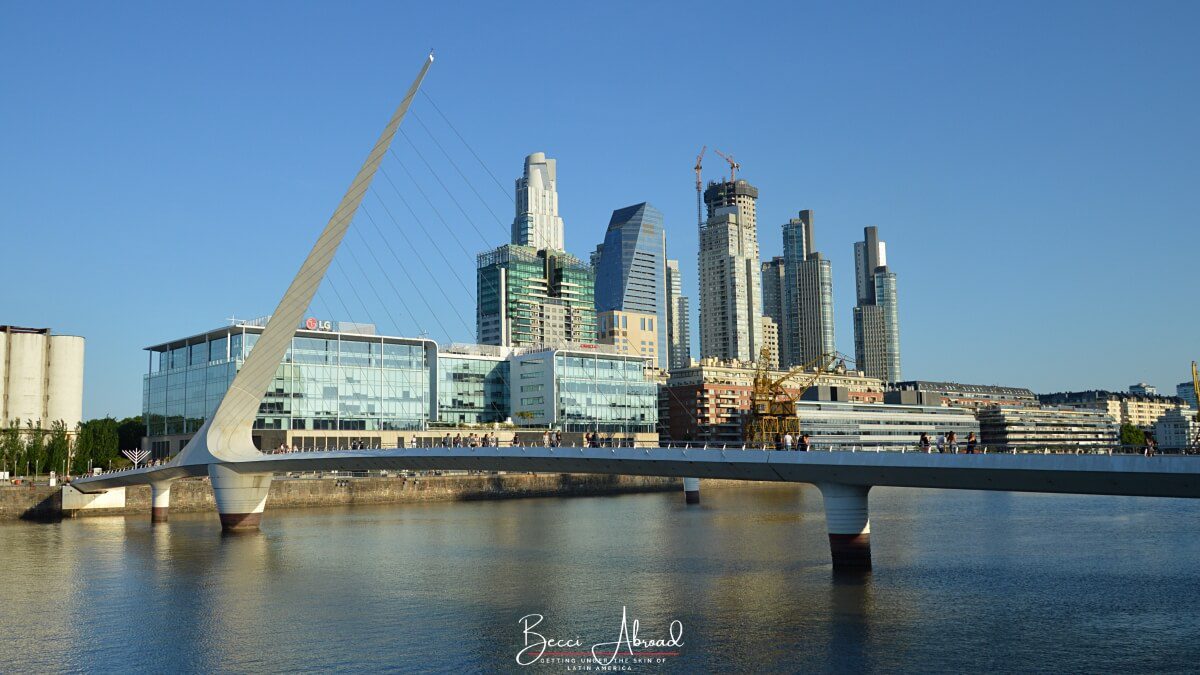

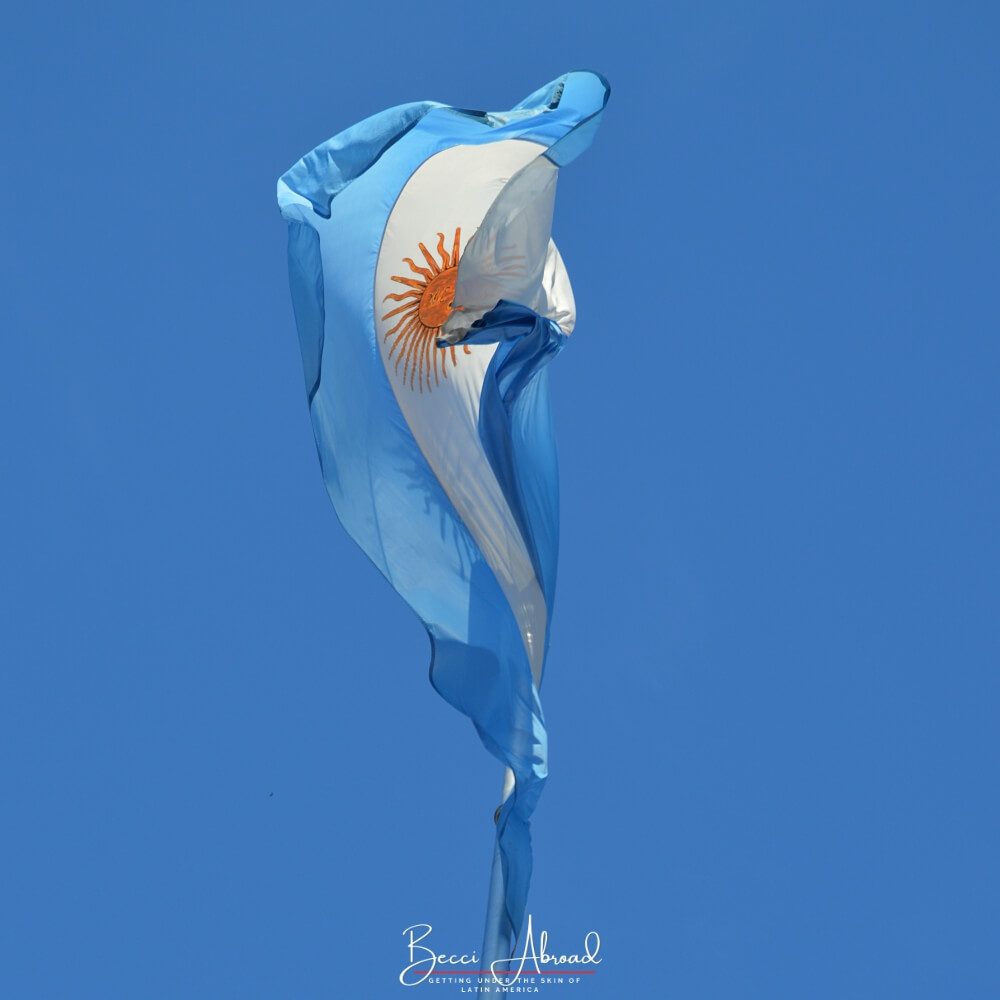
Learn to Make Argentine Empanadas and Alfajores
One of the best things to do in Buenos Aires that goes beyond sightseeing and looking at beautiful architecture is to sign up for a local cooking class and learn how to make two of Argentina’s most beloved treats: empanadas and alfajores.
Empanadas are a traditional snack or starter eaten all across Argentina. An empanada is a small bread pocket filled with different flavors; everything from spiced beef, chicken, cheese, or vegetables can go inside an empanada.
Empanadas can be baked or fried, and the way the empanadas are folded varies slightly from province to province in Argentina.
Actually, there is a bit of an art in learning to fold the empanadas correctly. I learned folding empanadas with my (Argentine) husband, and he joked that after I succeed I would be able to apply for Argentine citizenship!
An alfajor, on the other hand, is a cookie sandwich with two layers of biscuits with the popular caramel-like dulce de leche cream or a jam, and sometimes rolled in coconut or dipped in chocolate.
Alfajores are an all-time favorite when it comes to sweets in Argentina, which you should definitely not miss when visiting Buenos Aires.
Learning to make your own alfajor de dulce de leche will definitely also take you one step closer to gaining Argentine citizenship!
If you are short on time and still want to taste an alfajor, then drop by one of the many Havanna Cafées in Buenos Aires and try one of their many varieties of alfajores.
Book your empanadas experience!
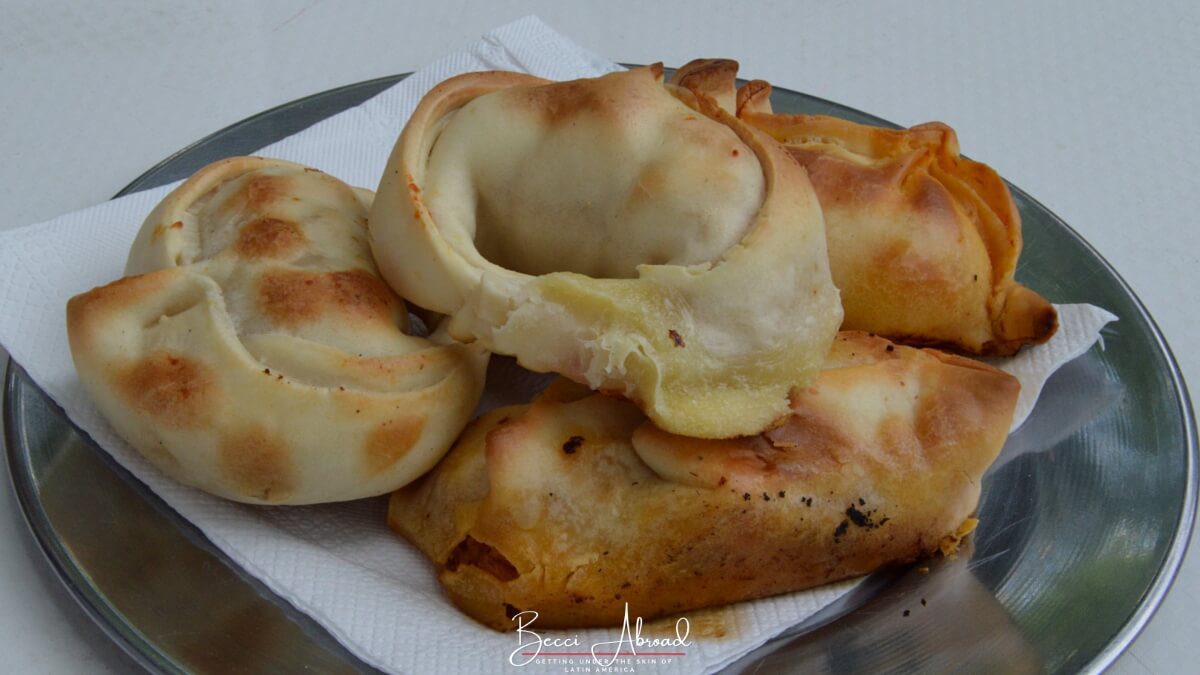
Drink Yerba Mate
One of the best things to do in Buenos Aires if you want to learn more about Argentine culture and traditions is to try yerba maté.
Yerba maté, often just called maté, is a traditional herbal drink with high caffeine levels and a deep cultural meaning in Argentina that goes far beyond the drink itself.
The drink has its roots in Argentina’s gaucho culture, where it was enjoyed by cowboys or gauchos out on the Argentine wetlands, las Pampas.
Today, maté remains a social ritual shared among friends, family, and even coworkers. When I studied my Master’s Degree in Buenos Aires, people would share a maté during class, and even sometimes also the teacher. I made the mistake once to accept the maté during an evening class, and I slept so badly afterward because I’m not used to drinking caffeine in the evening.
When you explore Buenos Aires, you’ll often see groups sitting in parks or along the riverbanks, passing a maté from person to person.
Tasting maté is only part of the experience, learning the etiquette behind how to prepare, serve, and share is a whole other thing. And no matter what you do, do not move the metal straw, la bombilla, after a maté is served!
It can be part to hard to try maté in Buenos Aires, if you don’t already know some Argentines who want to share their maté with you. But joining a yerba maté workshop is a great way to dive deeper into this Argentine tradition.
In a maté workshop, you will learn how to brew it properly, discover the unspoken maté “rules,” and connect with other travelers learning about Argentine culture.
Book a maté workshop in Buenos Aires


Watch a Tango Show
Buenos Aires is known as the birthplace of tango, and one of the best things to do in Buenos Aires is to experience tango firsthand.
Tango is much more than just a dance; it’s the heartbeat of Buenos Aires and part of the city’s cultural identity.
The history of tango is closely interlinked with Argentina’s history. Tango was born of the working-class neighborhoods of Buenos Aires, among European immigrants who had immigrated to Argentina in the late 19th century.
Tango music is often nostalgic and melancholy, reflecting the immigrants’ desperation and homesickness.
Tango’s popularity peaked during the 1930s and 1940s, when Argentina’s famous tango performer, Carlos Gardel, became a global star.
During the 1950s, tango’s popularity declined as dance halls and public gatherings were banned by military dictatorships
With the return of democracy in the 1980s, tango began to re-emerge and regain popularity. Today, tango has become a global symbol of Argentine culture.
In my post about fascinating facts about tango in Argentina, you can learn more about the history of tango.
When you’re in Buenos Aires, you can experience tango in many different ways, from catching an elegant tango show, going to a local milonga, tango dancehall, or signing up for a tango dance lesson.
There are many different venues offering tango shows,
I’m not a big dancer myself, so during my time in Buenos Aires, learning to dance tango wasn’t my priority (also, I completely failed at learning salsa in Cuba!). I did go to a tango show at Tango Porteño when my mum visited. And honestly, I would not recommend that you book a show with Tango Porteño. The experience was mediocre, and most of all felt like a big tourist trap.
One of my best tango experiences in Buenos Aires was one year during the annual tango festival in Buenos Aires, where local tango performers did small shows throughout the Buenos Aires subway, el Subte.
Maybe it was because of my lack of interest, but I found that tango wasn’t as big a part of everyday life in Buenos Aires as I had expected before I arrived (but again, I came from Cuba, where salsa is literally everywhere). If you are into tango dancing, there are definitely options to join a neighborhood milonga where local tango enthusiasts gather to dance.
Book a top-rated tango show in Buenos Aires
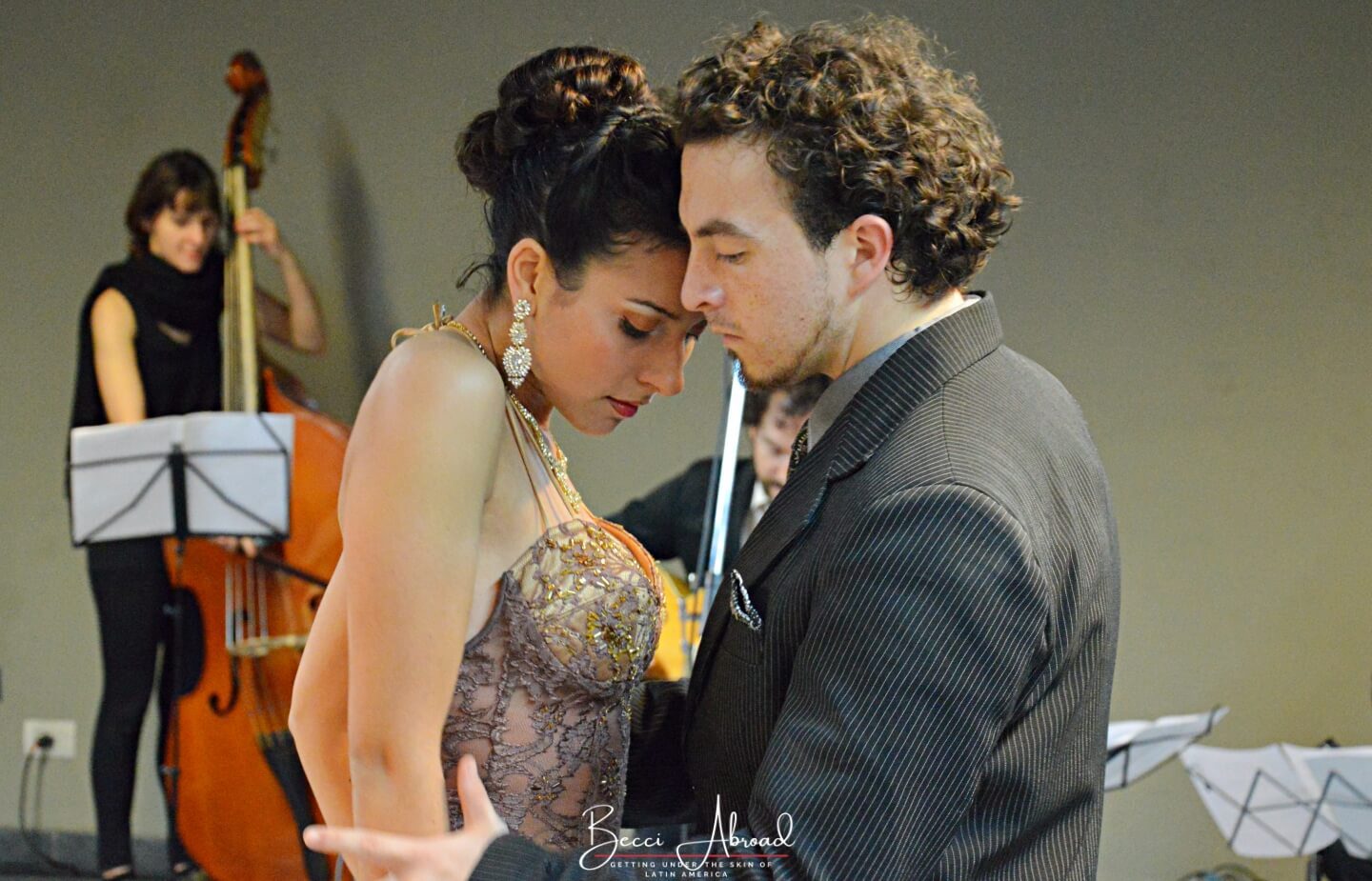


Walk Along the World’s Widest Avenue, Avenida 9 de Julio
A walk along Avenida 9 de Julio is one of the most iconic things to do in Buenos Aires for any first timer!
Avenida 9 de Julio is known as one of the widest avenues in the world and a true symbol of the Argentine capital, and the impressive avenue perfectly captures the chaotic spirit and pulse of Buenos Aires!
Avenida 9 de Julio, or translated as “Avenue 9th of July”, is named after Argentina’s Independence Day, July 9th, 1816.
The massive avenue cuts through the city center, connecting some of Buenos Aires’ most important landmarks and neighborhoods from north to south.
Here are some highlights to discover along Avenida 9 de Julio:
- El Obelisco – The city’s most famous monument and an unmistakable symbol of Buenos Aires. As you walk along Avenida 9 de Julio, you’ll quickly spot the famous Obelisco. El Obelisco is located at Plaza de la República in the intersection of Avenida 9 de Julio and Avenida Corrientes.
- Teatro Colón – One of the world’s leading opera houses, where you can visit on a guided tour or book tickets to attend a performance.
- The Eva Perón Building (Ministry of Public Health) – A massive and striking building features two massive steel portraits of Eva Perón on its façades; one elegant, one assertive. Urban legend has it that the softer portrait faces the wealthy north, while the more assertive one addresses the working-class south, encouraging the working class to rise and make their voices heard.
- The Green BA Sign (Plaza de la República) – Two massive letters representing one of Buenos Aires’ many nicknames, BA. The letters are made of different plants and flowers, and have become a popular photo spot for pictures of Avenida 9 de Julio and El Obelisco.
- Avenida Corrientes – Crossing Avenida 9 de Julio, Avenida Corrientes is known as the street that never sleeps. Avenida Corrientes is the cultural heartbeat of Buenos Aires, lined with historic theaters, tango venues, old-school pizzerias, and bookshops.
At Avenida 9 de Julio, you have a constant flow of buses and taxis alongside lively cafés and restaurants just off the main avenue. Walking along Avenida 9 de Julio is a great way to experience the chaotic energy of Buenos Aires.
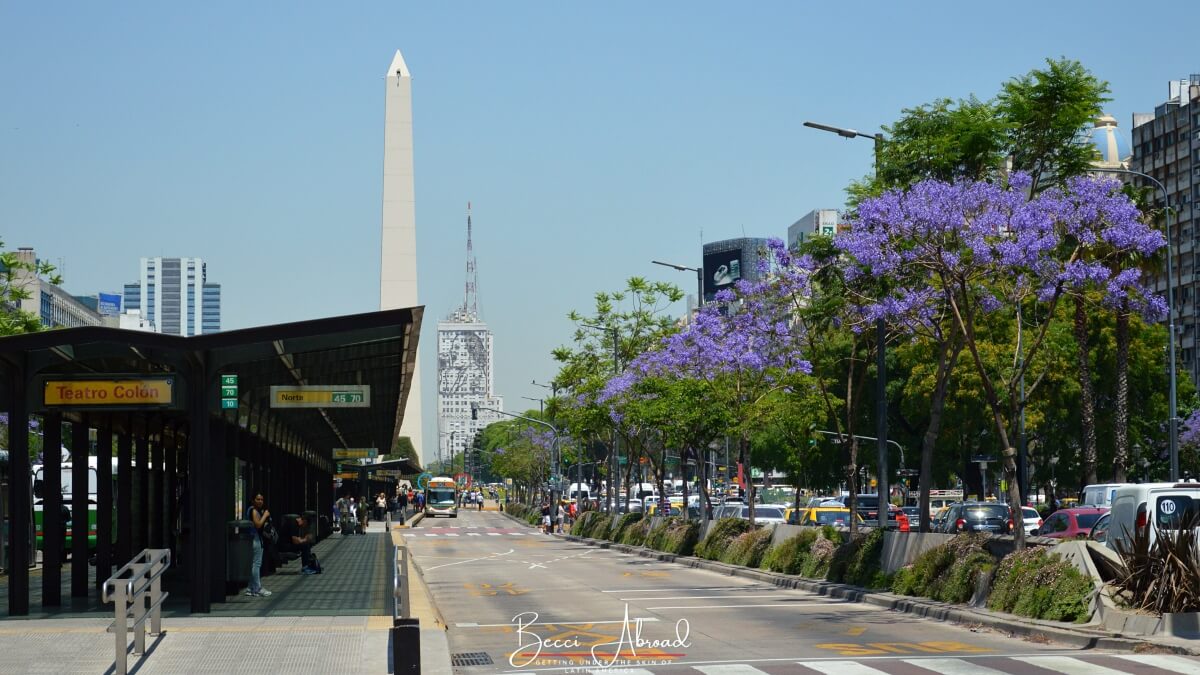

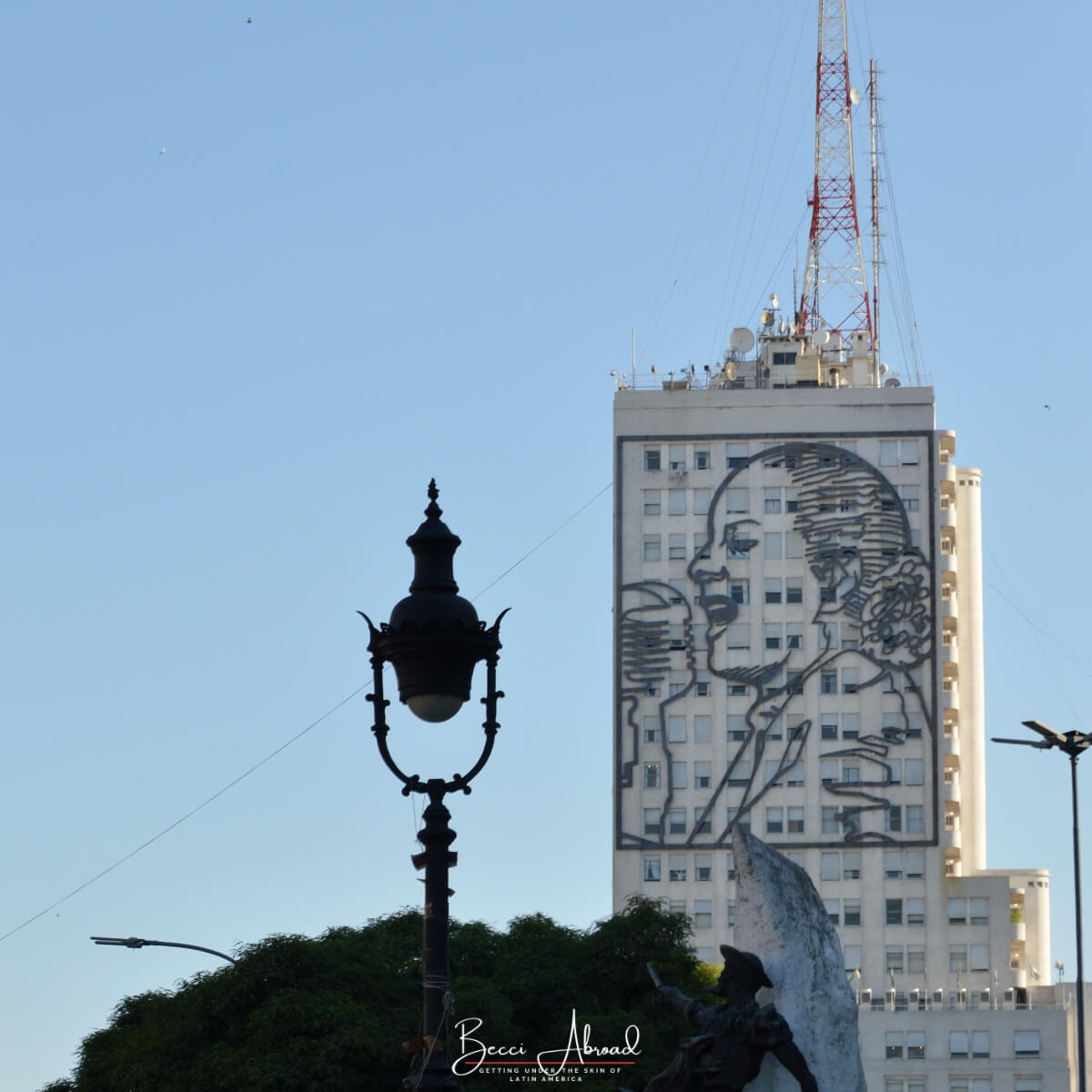
Learn about Argentine History & Politics
Argentina has a fascinating modern history and a complex political past. Even after earning a Master’s degree in Political Science in Argentina, I’m still struggling to grasp all the aspects of Argentina’s political agenda.
If you are like me and like to learn more about the history and political situation of the places you visit, I highly recommend that you set some time apart to learn more about Argentina’s past!
Evita Perón and the Peronist Movement are just one of the many fascinating stories from Argentina’s past. And as you can see, I have already mentioned Evita Perón quite a lot in some of the other sections. Although she died in 1952, you can still find references to her all over Argentina and Buenos Aires.
Whereas most people abroad seem to have an idealized image of Evita Perón, she remains a deeply polarizing figure in Argentine society! Some Argentines adore her, while other hates her and what she stands for.
The legacy of the Perón era is marked by complexities and conflicts that significantly shaped modern-day Argentina.
If you want to learn more about Buenos Aires’ history and political landscape, there are a few guided tours that dig a bit deeper:
Book your Buenos Aires Political guided tour
Take Photos of El Obelisco
Taking photos with the famous Obelisco is another of those must things to do in Buenos Aires!
El Obelisco de Buenos Aires, translated to English as Buenos Aires’ Obelisk, is one of the most iconic historical landmarks in Buenos Aires! El Obelisco stands in the middle of the intersection of two of Buenos Aires’ most famous avenues: Avenida 9 de Julio and Avenida Corrientes.
This striking monument was built in 1936 to commemorate the 400th anniversary of the city’s founding. El Obelisco marks the location where the Argentine flag was raised for the first time.
For the best photos of El Obelisco, head to the small viewpoint on Calle Presidente Roque Sáenz Peña (you can find it marked as Escalera Panorámica – Obelisco on Google Maps). From there, you’ll get a great elevated perspective of the monument and Avenida 9 de Julio stretching out behind it.
El Obelisco has become the city’s most recognizable landmark and a popular meeting point. You might have seen the pictures of locals gathering by El Obelisco during national celebrations or football victories, especially after Argentina’s World Cup victory in 2022.
In the evening, the Obelisk glows with stunning lights that change colors for various special occasions or celebrations, including Christmas, New Year, and even when Argentina celebrates a World Cup victory.
El Obelisco is definitely one of those things to do in Buenos Aires that you just need to add to your list!
Book a guided tour to explore Buenos Aires
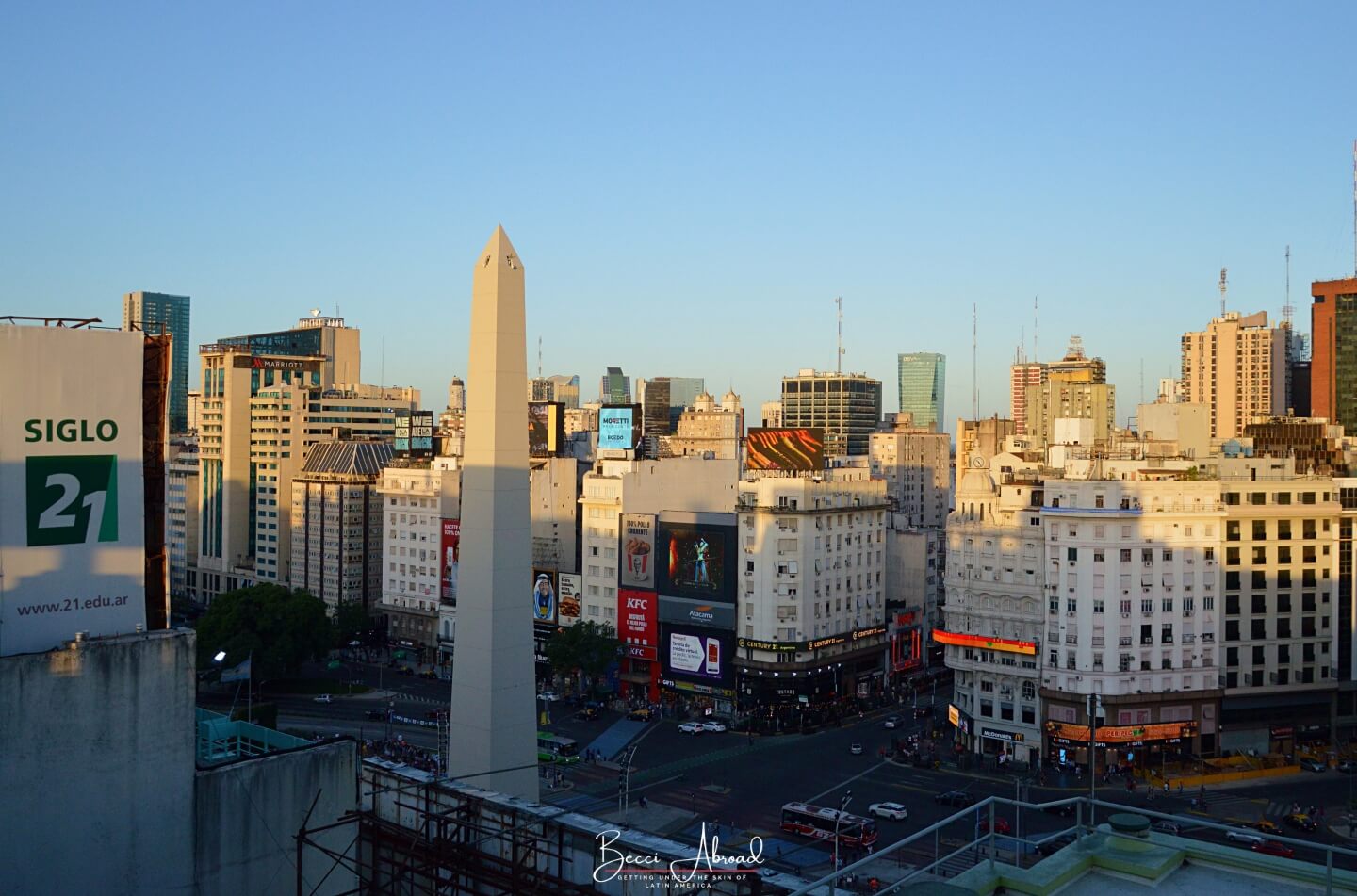

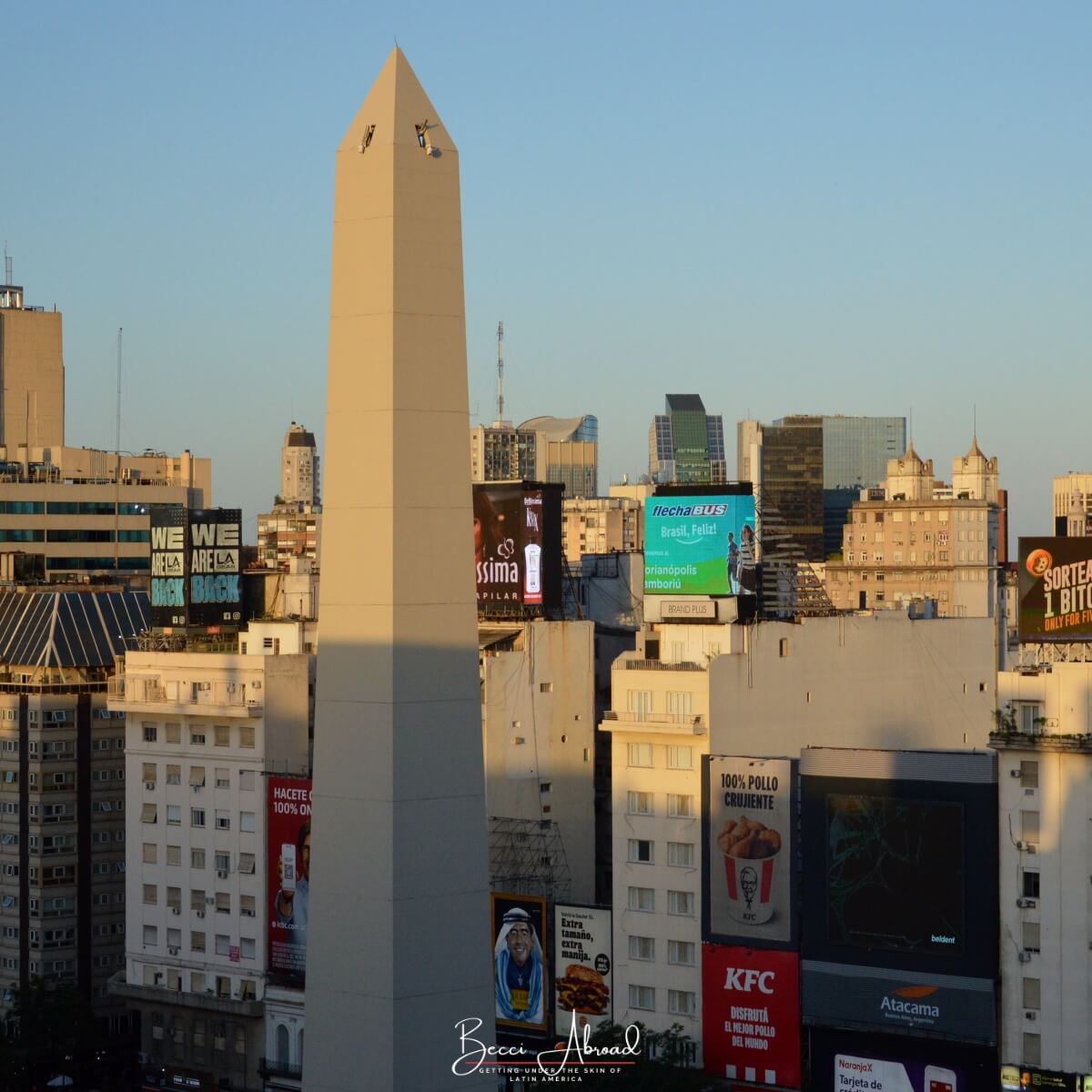
Admire the Beauty of the Colón Theater
The Colón Theater is Buenos Aires’ Grand Opera House, and one of the best things to do in Buenos Aires if you enjoy glamorous architecture and world-class music.
The Colón Theater, also known as Teatro Colón in Spanish, is situated just off Buenos Aires’ iconic Avenida 9 de Julio. The theater is one of the finest theaters and opera houses in Latin America. National Geographic has even named Teatro Colón one of the 10 best opera houses in the world.
The famous opera house opened its doors (or should I rather say curtains?) for the first time in 1908. The architecture of the Colón Theater reflects Argentina’s cultural heritage as a country that received many European immigrants, and the design is a mix of Italian and French architecture.
Sometimes you can be lucky to find very affordable tickets for the operas or concerts held in the Colón Theater.
Even if you don’t have time to see a live performance, it’s worth joining a guided tour of the theater to appreciate the theater’s beauty.
The tour takes you through the grand marble staircases, glittering chandeliers, and intricately decorated balconies, all while uncovering fascinating stories from more than a century of performances.
A visit to Teatro Colón offers a glimpse into Argentina’s golden days of economic prosperity and elegance, and it is a truly wonderful plan for a date night in Buenos Aires.
Location: Teatro Colón, Cerrito 628, Buenos Aires
Grab your entrance ticket to Teatro Colón



Wander Down the Historical Avendia de Mayo
Avenida de Mayo is one of the classic places to visit in Buenos Aires that should be on everybody’s list of things to do in Buenos Aires!
Avenida de Mayo is a historic avenue in the center of Buenos Aires connecting two of the Argentine capital’s most important landmarks: Casa Rosada and Palacio del Congreso.
Avenida de Mayo, which translates to the May Avenue, is named in honor of the Argentine independence fight, the May Revolution of 1810.
Avenida de Mayo features numerous cafes, restaurants, and shops, and the avenue is perfect for a stroll through some of the most beautiful architecture in Buenos Aires.
Some of the highlights of Avenida de Mayo are:
- Palacio Barolo – An impressive skyscraper and landmark from the 1920s. Palacio Barolo was built with inspiration from Dante Alighieri’s famous poem, The Divine Comedy. You can visit with a guided tour or book a table at the outdoor terraces of Salón 1923.
- Café Tortoni – The oldest café in Buenos Aires, dating back to 1858, and a popular place to stop for breakfast or afternoon tea to try traditional Argentine alfajores or medialunas (Argentine-style croissants).
- Dome Rooftop Bar – The rooftop bar at Hotel Tango de Mayo is the perfect place to unwind after a day of exploring the city, while admiring Avenida de Mayo from above. Grab a drink from their cocktail menu and take in the stunning views!
- Congreso de la Nación – At the opposite end of Avenida de Mayo from Casa Rosada stands the National Congress Building, housing Argentina’s parliament and congress. The Congress Building offers free guided tours in English.
- Calle Florida – A small pedestrian shopping street that crosses Avenida de Mayo, a stone’s throw from Plaza de Mayo. Calle Florida is infamous for its crowds of currency exchange vendors shouting: cambio, cambio, dollar, euro, cambio, cambio. The vendors belong to the illegal exchange offices, known as cuevas, located around Calle Florida.
To walk down Avenida de Mayo is a walk through Argentina’s history and economic development of the 20th century, and one of the best things to do in Buenos Aires for first-timers!

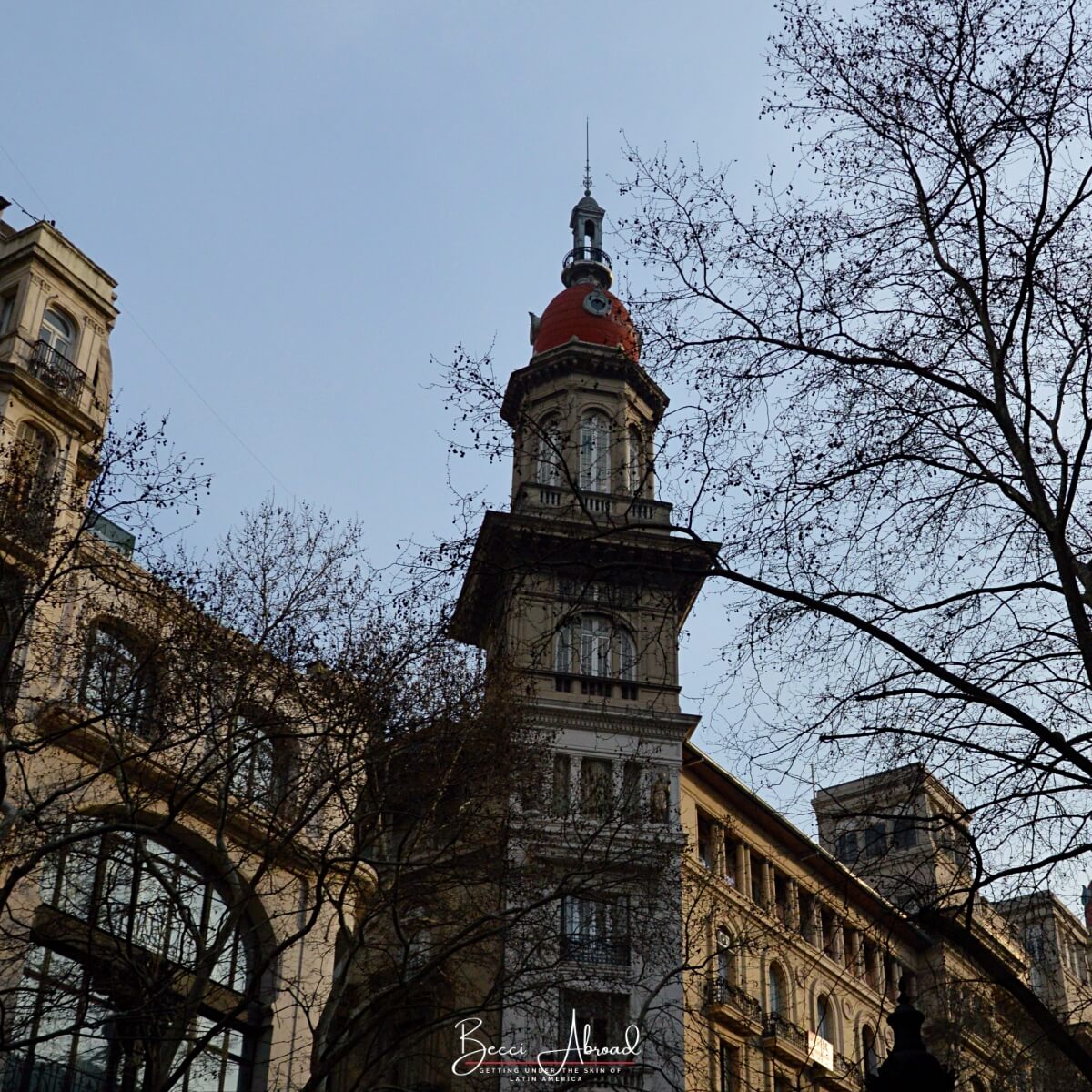

See Buenos Aires From Above at the Palacio Barolo
If you love great city views as much as I do, visiting Palacio Barolo is one of the absolute best things to do in Buenos Aires!
Palacio Barolo, or translated to English “The Barolo Palace”, is an impressive building located on Avenida de Mayo in the heart of Buenos Aires.
Palacio Barolo was designed by Italian architect Mario Palanti for local businessman Luigi Barolo. The building was completed in 1923 and held the title of the tallest building in Buenos Aires and South America for over a decade.
The Barolo Palace is designed in inspiration from Dante Alighieri’s famous poem “The Divine Comedy”, and symbolizes the journey from Hell to Heaven.
When you step inside, the darker ground floors symbolize Hell. As you move up, the light increases with each floor until you finally reach the lighthouse at the top, representing Heaven.
You can only access the lighthouse through a guided tour, which is worth it for the breathtaking view alone. I did one of the tours years ago when my mum visited Buenos Aires, and while the tour itself wasn’t the most captivating, we both agreed that the views from the lighthouse were amazing!
If you still want to enjoy the beautiful views from the top of the Barolo Palace, I recommend reserving a table at the rooftop café, Salón 1923.
Salon 1923 is located on the Barolo Palace’s terraces and offers beautiful views over Buenos Aires. The rooftop café is open for meriendas (afternoon tea) from 5 pm to 7 pm every day, and sometimes for after-office drinks from 8 pm. I’ve been there several times over the years I lived in Buenos Aires. The service wasn’t the best, but the views from the terraces are incredible!
Through GetYourGuide, you can also reserve a visit to the Barolo Palace’s rooftop bar, including a drink and tapas.
Palacio Barolo is an impressive building to visit to experience some of the best architecture in Buenos Aires, while also enjoying one of the absolute best panoramic views of the city!
Location: Palacio Barolo, Avenida de Mayo 1370, Buenos Aires
Book your visit to Palacio Barolo here



Try Argentine Merienda at a Cafe Notable
One of the most relaxing things to do in Buenos Aires is to enjoy a traditional merienda, the Argentine version of afternoon tea.
A merienda is typically enjoyed between 5 p.m. and 7 p.m., and includes coffee, tea, or hot chocolate paired with medialunas (Argentine croissants), facturas (pasties), tostados (toasted ham and cheese sandwiches), or sweet treats like alfajores.
The best place to experience this beloved local ritual is at one of the city’s Cafés Notables or Bares Notables, historic cafés officially recognized for their cultural importance in Buenos Aires.
The Cafés Notables have hosted artists, writers, and politicians for decades and are an essential part of Buenos Aires’ identity.
Here are some of the most popular Cafés Notables to visit for a traditional Argentine merienda:
- Café Tortoni – The oldest and most iconic café in Buenos Aires, located on Avenida de Mayo.
- La Poesía – A beautiful traditional cafe located in San Telmo. La Poesía used to be the meeting spot for poets.
- Las Violetas – A cafe with a more local vibe located in the neighborhood of Almagro. Las Violetas is known for its beautiful stained glass and pastries.
- Confitería La Ideal – A stunning historic café located in downtown Buenos Aires, close to el Obelisco and Avenida Corrientes.
Making a stop at one of Buenos Aires’ historical cafes is not just a snack break but a way to experience a key part of Argentine traditions. After a merienda, you will start to understand why dinner is usually served so late in Buenos Aires!


Discover Buenos Aires’ Many Museums
Buenos Aires houses many different museums that offer a dive deeper into various topics, from modern art to Argentina’s history.
Exploring Buenos Aires’ museums is one of the best things to do in Buenos Aires if you want to learning more about the city beyond tango shows and asados.
Here are some of the city’s top museums worth adding to your Buenos Aires itinerary:
- Museum of Latin American Art in Buenos Aires (Museo de Arte Latinoamericano de Buenos Aires, MALBA) – MALBA is one of the best modern art museums in Latin America, showcasing works by artists like Frida Kahlo, Diego Rivera, and Antonio Berni. MALBA is a must if you enjoy art and want to learn more about contemporary Latin American art and culture.
- National Museum of Fine Arts (Museo Nacional de Bellas Artes) – The Bellas Artes Museum houses one of the most extensive collections of Argentine and Latin American Fine Art. The museum is located near Recoleta Cemetery, and it is perfect for a combined visit to the Cemetery, Floralis Genérica, and the museum.
- National Museum of Decorative Art (Museo Nacional de Arte Decorativo) – The museum displays fine furniture, sculptures, paintings, and decorative arts. It is housed in an early 20th-century French-style mansion that used to be the personal home of an influential aristocratic family.
- The Evita Museum (Museo Evita) – The museum offers an intimate look into the story of one of Argentina’s most influential women, Argentina’s former first lady, Eva Perón, through personal belongings, photographs, and multimedia exhibits.
- The ESMA Museum (Museo Sitio de Memoria EX ESMA) – The museum is located on the grounds of a former clandestine detention center used during Argentina’s last military dictatorship. The museum tells the story of human rights and state terrorism during the dark years of the Dirty War in Argentina.
- The Carlos Gardel House Museum (Museo Casa Carlos Gardel) – A small museum located in the Abasto neighborhood, dedicated to the life and legacy of Carlos Gardel, Argentina’s most famous tango singer.
Buenos Aires’ museums are a fascinating way to experience the city beyond its streets and plazas, and learn about its art, history, or famous personalities.
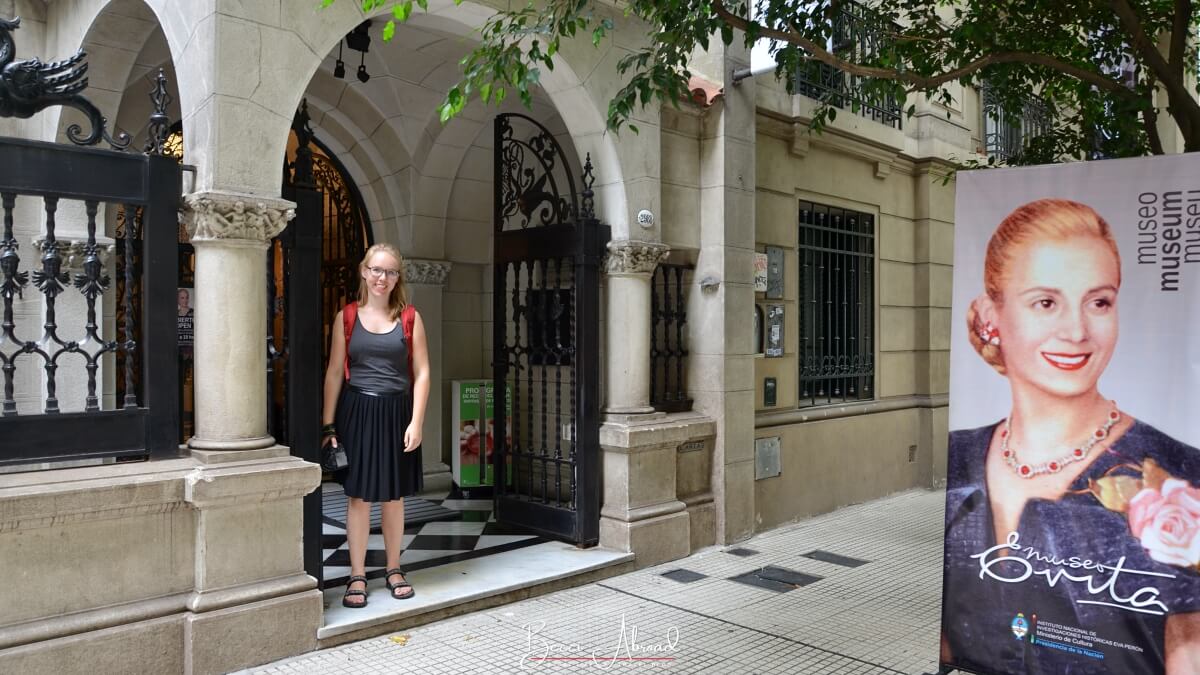
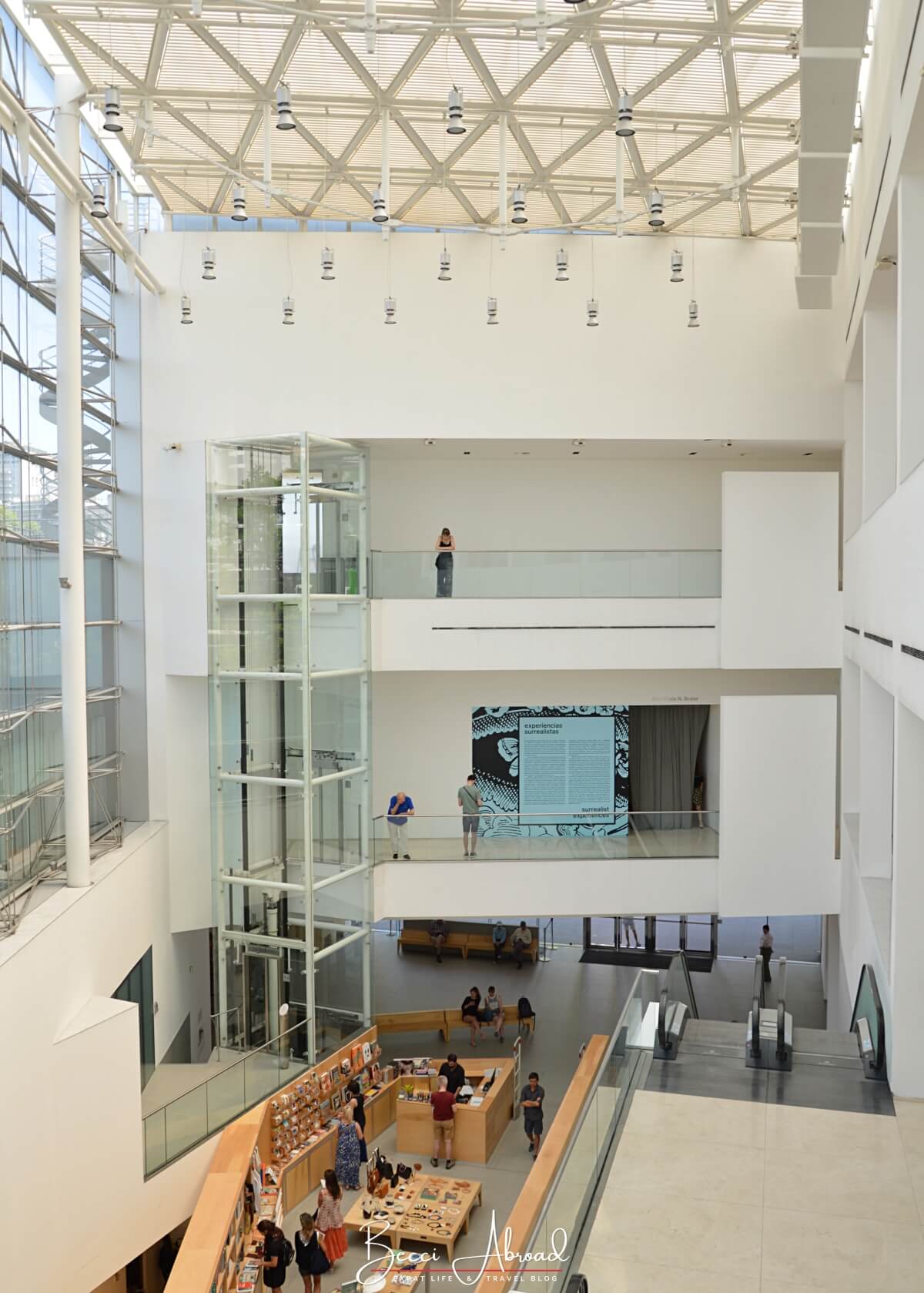
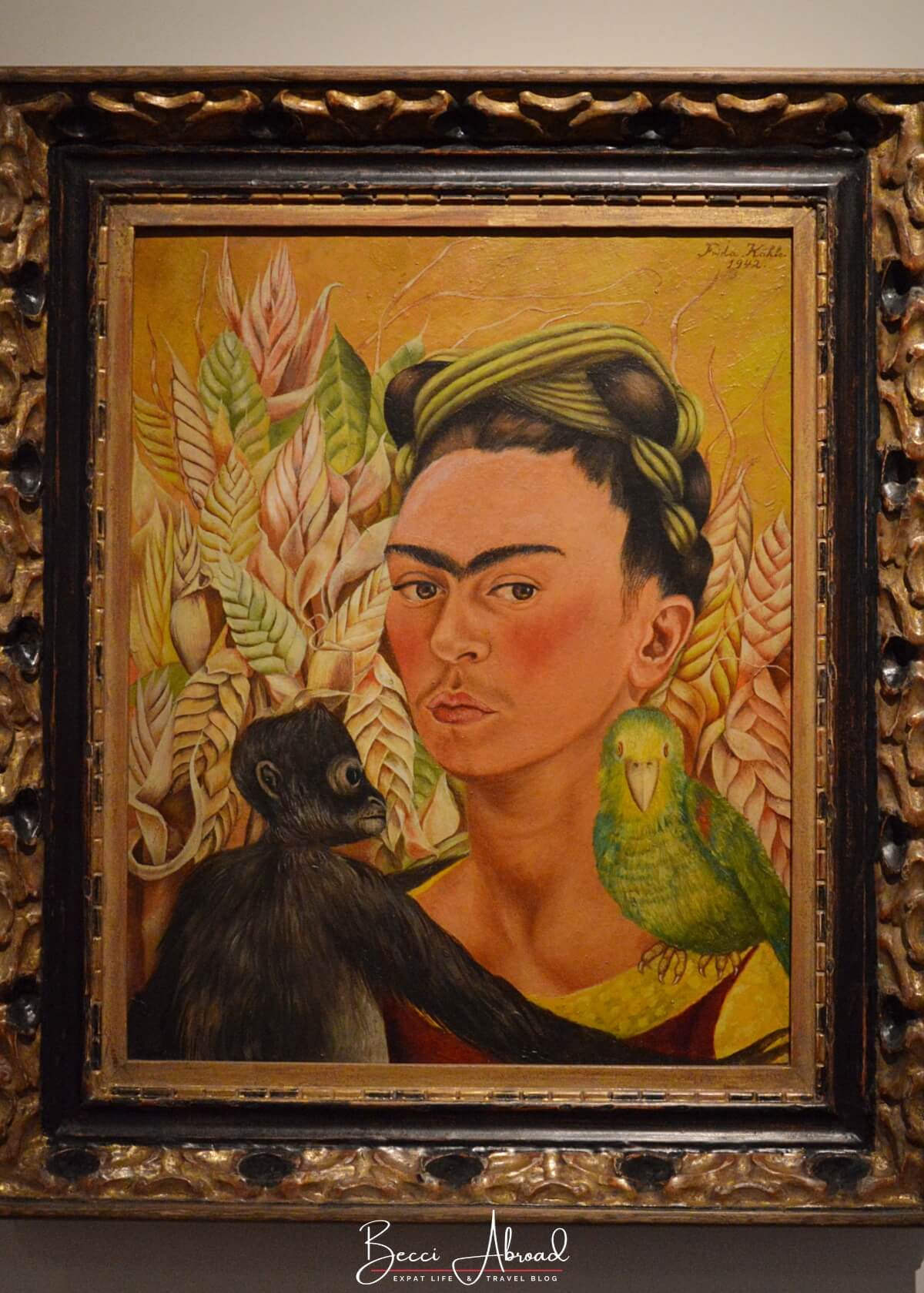
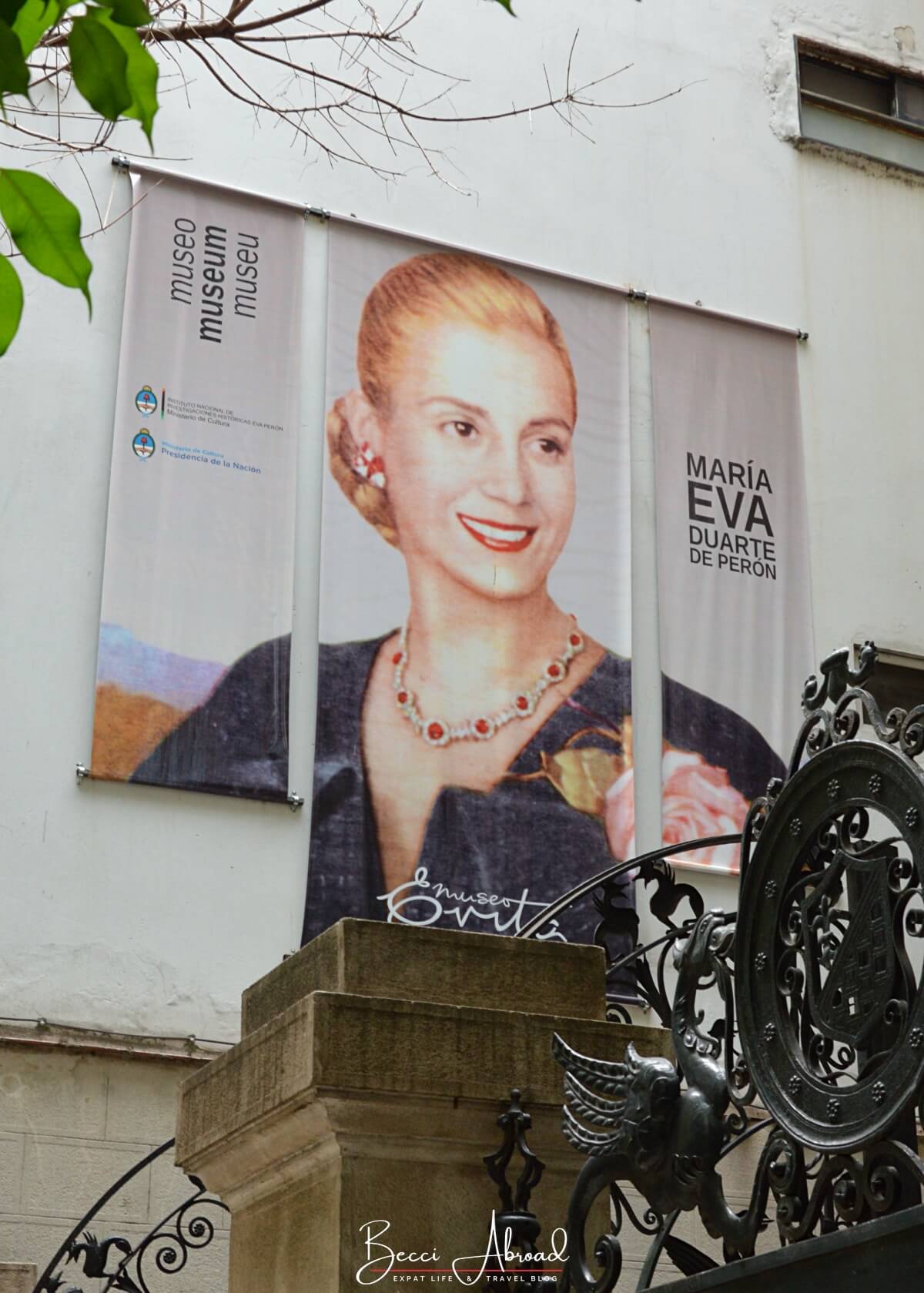
Join a Free Walking Tour
A fun and budget-friendly thing to do in Buenos Aires is by joining a free walking tour.
These tours are a great way to explore the city’s main sights while learning about its fascinating history, politics, and culture from a local guide.
When I arrived in Buenos Aires in 2016, there were not that many options of free walking tours. Today, there are several tour companies offering free tours in different areas of Buenos Aires, including the historic center, Recoleta, Palermo, and Puerto Madero.
Most tours work on a tip-based system, so you pay what you feel the experience is worth at the end.
Here are some of the most popular free walking tours in Buenos Aires:
- Buenos Aires City Free Walking Tour
- Puerto Madero Free Walking Tour
- La Boca Free Walking Tour
- Palermo Free Walking Tour
- Free Walking Tour of the Recoleta Cemetery
- San Telmo Neighborhood Free Tour
- Colonial Churches of Buenos Aires Free Tour
Joining one of the free walking tours is a great thing to do in Buenos Aires when you have just arrived, and to learn more about the history of the city!
Sign up for a free guided tour in Buenos Aires
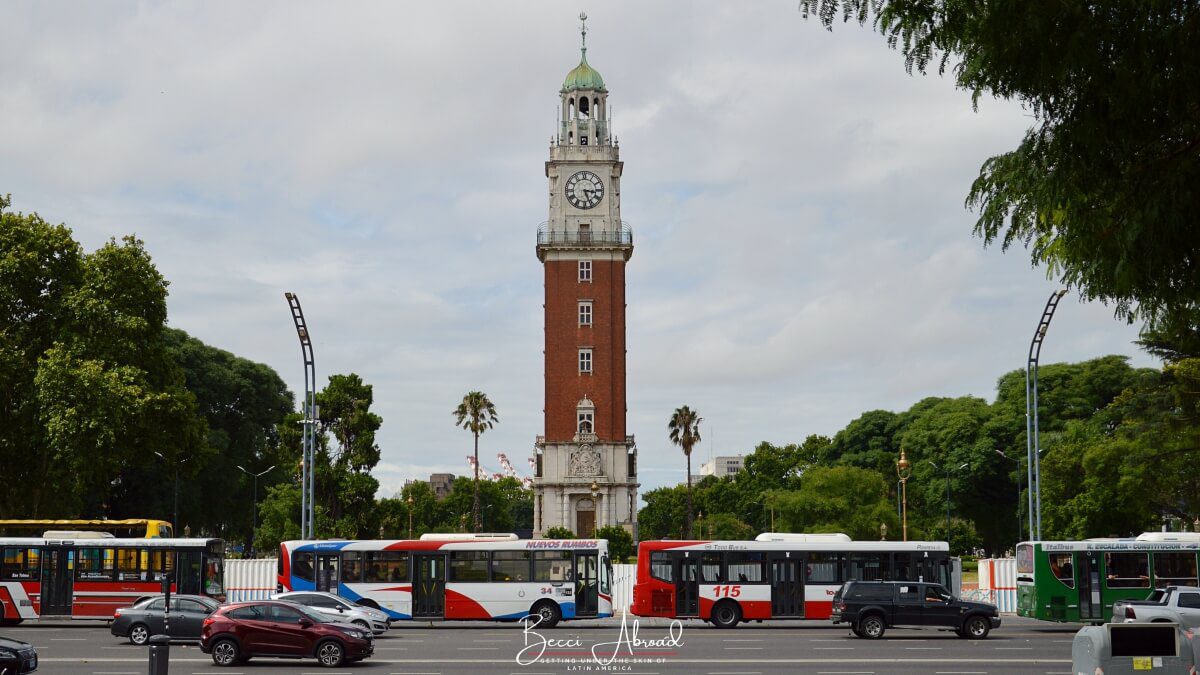
Explore the Palermo Neighborhood
Visiting the Palermo neighborhood is one of the best things to do in Buenos Aires to get a more local feeling of life in Argentina’s capital.
Palermo is the largest neighborhood in Buenos Aires, located northeast of downtown Buenos Aires. The neighborhood is one of the safest areas in Buenos Aires, and a popular place to live for expats and international students staying in Buenos Aires.
Palermo offers a great mix of green parks, boutique shops, museums, restaurants, cafes, bars, and local street art!
Here are some of the highlights of Palermo:
- The Japanese Garden (Jardín Japonés de Buenos Aires) – One of the biggest Japanese gardens outside Japan is located in the heart of Palermo. Jardín Japonés de Buenos Aires is beautifully decorated with traditional red-colored bridges and some pons.
- Buenos Aires Botanical Garden (Jardín Botánico Carlos Thays) – A beautiful green oasis located in the center of Palermo, featuring around 6,000 species of plants, flowers, and trees alongside greenhouses and sculptures. The botanical garden is perfect for a relaxing break from the busy streets of Palermo.
- Plaza Serrano – A cobblestoned square in the center of Palermo that is known for its many bars and restaurants. On weekends, you can also find a market at Plaza Serrano.
- Palermo Forests (Bosques de Palermo) – The most popular park in Buenos Aires, perfect for a picnic or an afternoon break. The Palermo Forests feature a lake where you can rent paddle boats, a rose garden, and a planetarium.
- Rose Garden Walk (Paseo del Rosedal) – Inside the Palermo Forests, you will find a beautiful rose garden, Paseo del Rosedal or the Rose Garden Walk, with a Spanish patio.
- Local Street Art – Palermo is one of the best places to explore street art in Buenos Aires, with impressive murals painted on everything from old houses to restaurants. Join a street art tour to get the most out of Palermo’s street art.
- Museo Evita – The museum for Argentina’s famous former first lady, Eva Peron, is located in Palermo, and is a great place to visit to learn more about her life and influence on Argentine society.
Are you looking for the best way to explore Palermo? Check out my one-day itinerary to Palermo!
Explore more of Palermo with a tour
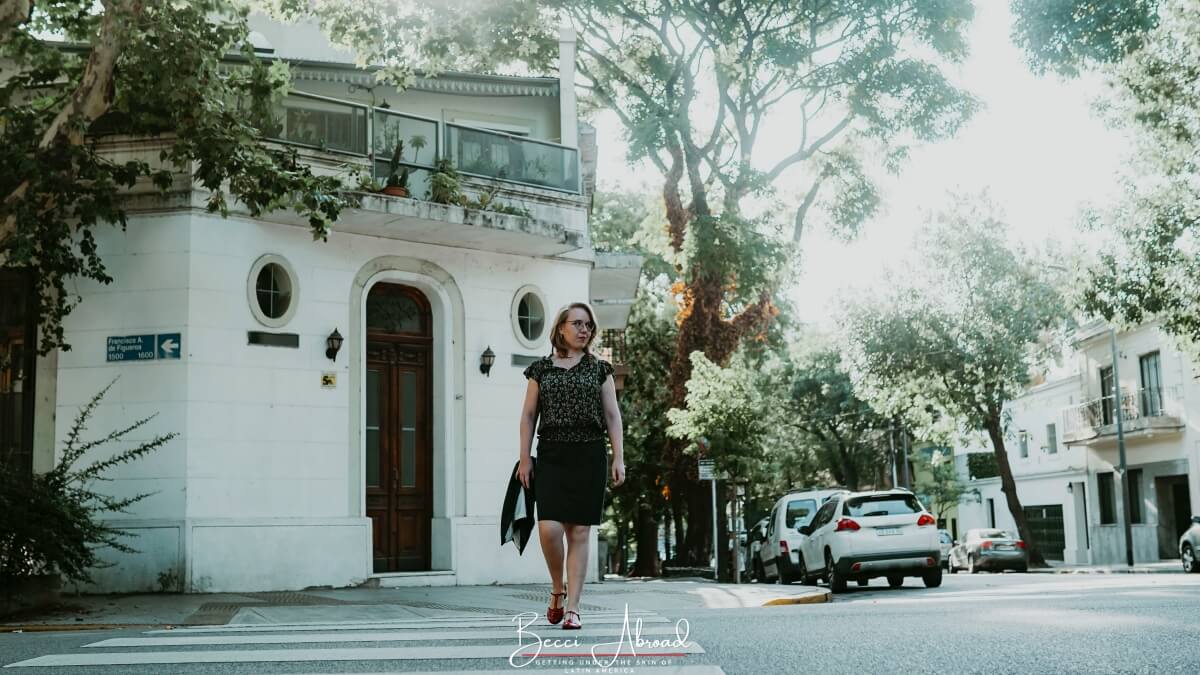
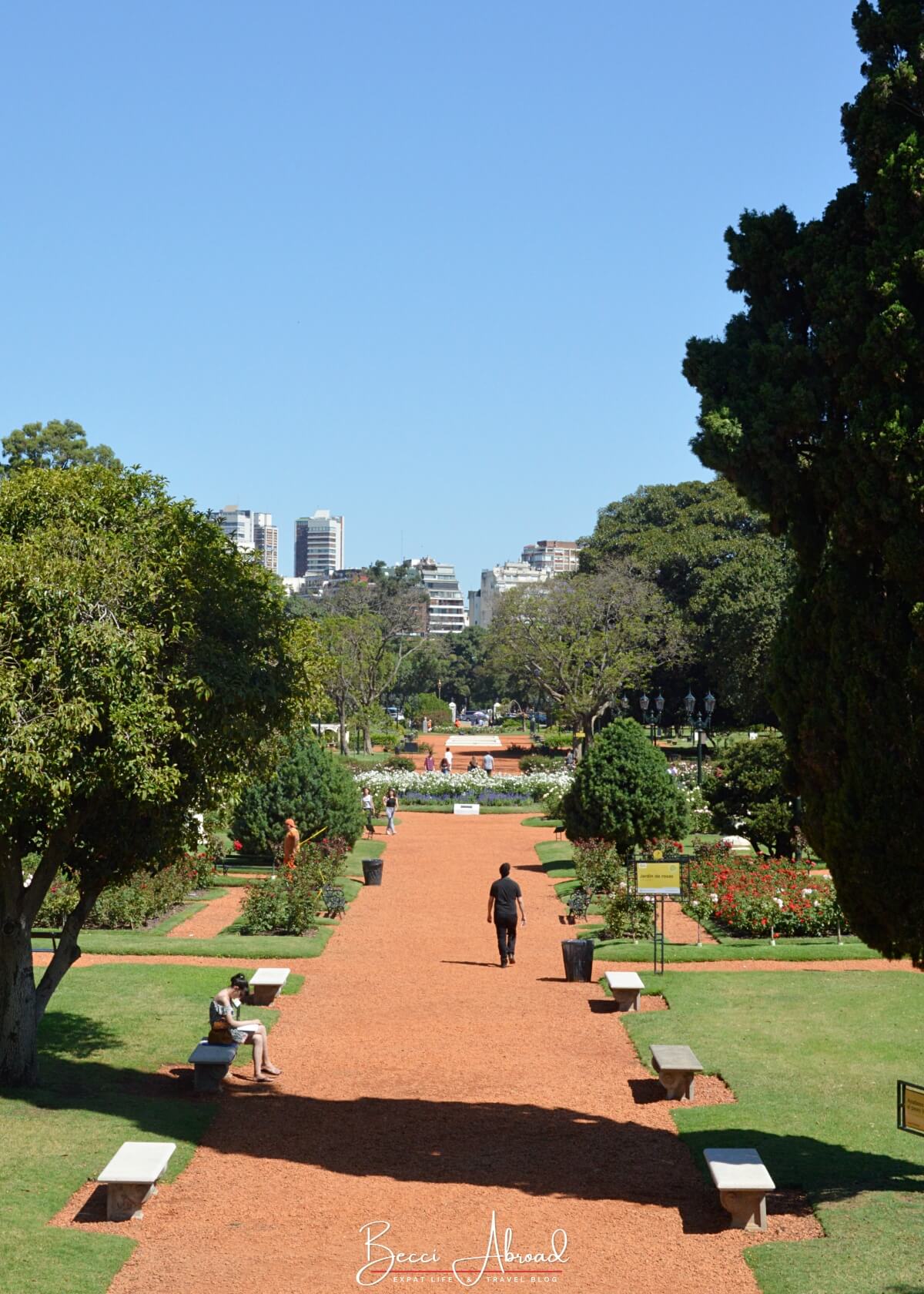

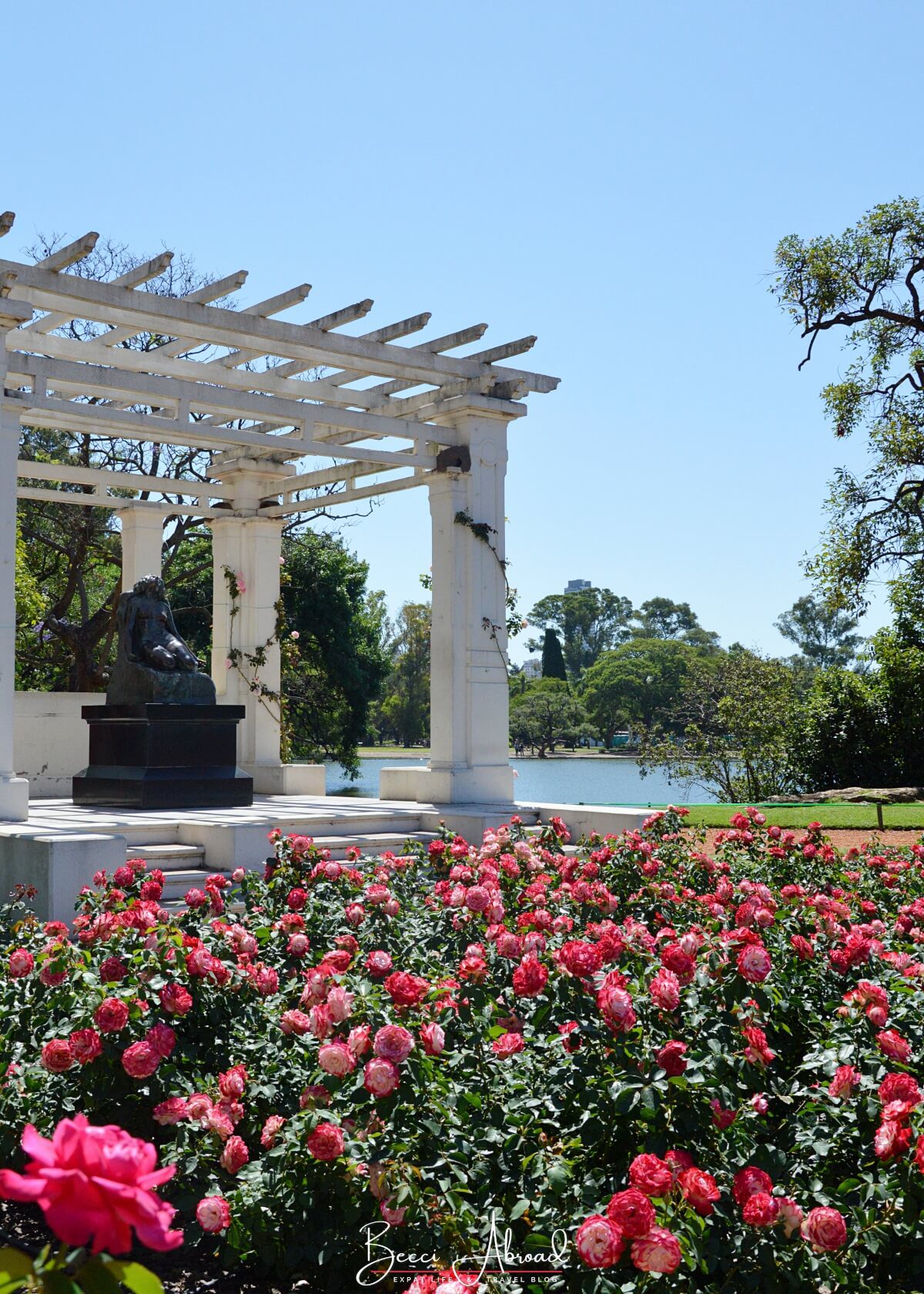
Watch a Fútbol Match
Fútbol (or soccer) is HUGE in Argentina, and it isn’t just a sport but a national passion!
Buenos Aires is home to some of the most legendary football clubs and two ultimate rivals in Argentine soccer: Boca Juniors and River Plate.
A soccer match between Boca Juniors and River Plate is called a Superclásico, and it is the most famous and intense football rivalry in Argentina.
Boca Juniors’ stadium, La Bombonera, is properly the best known. The stadium is located in the colorful neighborhood of La Boca, and is famous for its intense atmosphere and passionate fans.
On the other side of town in Belgrano, you will find River Plate’s Monumental Stadium. The Monumental Stadium is the largest in Argentina and often hosts the national team’s biggest games.
It is almost impossible to get tickets to a match at La Bombonera or La Monumental, especially for a Superclásico. But both stadiums have a museum where you can visit and learn about their star players.
I’ll admit I’m not a soccer fan myself. In fact, during my seven years living in Buenos Aires, I never went to a match! I know, it’s almost unthinkable for locals, but big crowds of people jumping around and screaming is not my cup of tea!
But even if you are trying to avoid fútbol, it is almost impossible in Buenos Aires. For example, one evening after a late university class during my Master’s degree in Buenos Aires, I accidentally got caught in the massive crowd spilling out from a River Plate game.
I experienced Argentina’s victory in the 2022 World Cup. The energy and passion during the event are fascinating to see, even from the sidelines.
So, even if you do not like fútbol, watching the excitement from a nearby café helps you understand why fútbol is very important in Argentina.
Book your Argentine fútbol experience
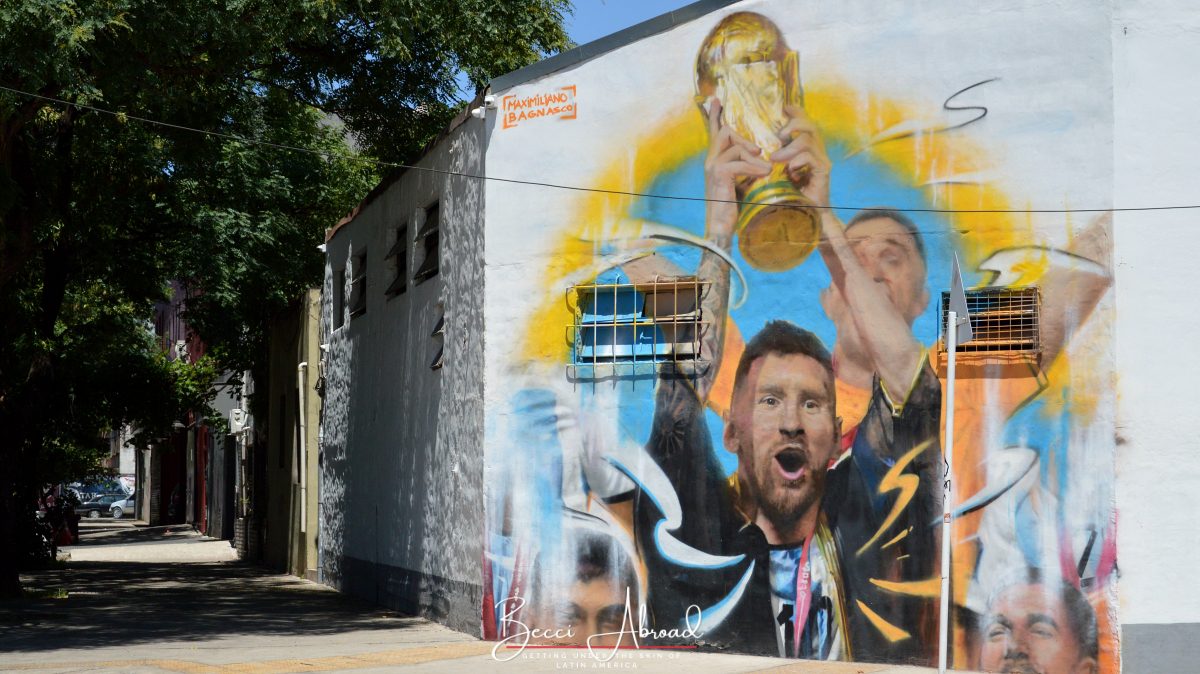
Escape the City on a Boat Trip of the Tigre Delta
A day trip to the Tigre Delta is one of the best things to do in Buenos Aires if you want to explore a little bit outside the city.
The Tigre Delta sits at the entrance to the vast Paraná Delta, a maze of winding waterways, lush islands, and stilt houses that can only be reached by boat.
Getting to Tigre from Buenos Aires is simple! Tigre is located just about 17 miles (28 km) north of downtown Buenos Aires, and is connected directly with Buenos Aires by train. Hop on the Mitre Line train from Retiro Station, and you’ll be in Tigre in about an hour.
If you don’t want the hassle of getting to Tigre on your own, you can also book a guided tour that includes the boat excursion and transportation from Buenos Aires.
Locals love coming to the Tigre Delta for a weekend getaway. The delta area is perfect for relaxing boat rides, kayaking, or simply enjoying the slower pace.
Here are some of the best things to do on a day trip to the Tigre Delta:
- Boat Tour on the Tigre Delta – One of the best ways to experience Tigre is by taking a boat tour through the delta. On the boat tours, you will pass by charming weekend homes, rowing clubs, and river cafés.
- Shop at Puerto de Frutos – Take a stroll through Tigre’s lively market, Puerto de Frutos, where you can shop for local crafts and souvenirs.
- Discover Tigre’s Art District – Boulevard Saenz Peña in Tigre is home to a small art district with cozy cafés and local galleries.
- Visit Tigre’s Art Museum – Museo de Arte Tigre is a beautiful riverside museum housed in a restored Belle Époque building.
I have visited the Tigre Delta several times during my years of living in Buenos Aires, and it is always a great break from Buenos Aires’ chaotic city life.
If you are staying in Buenos Aires for a longer time and want to experience more beyond the city limits, then there are several easy day trips from Buenos Aires you can explore.
Book your tour to the Tigre Delta



Get the Most Out of Buenos Aires
Now we have explored some of my absolute favorite things to do in Buenos Aires, and I hope you found it useful. In this section, I want to share some last tips on how to get the most out of your travels to Buenos Aires.
Top-rated Tours and Activities in Buenos Aires
There are many interesting things to do in Buenos Aires, and I have gathered some of the most popular top-rated tours and activities for you:
- Private Tour of Buenos Aires’ Highlights
- Small Group Buenos Aires City Tour
- Guided Tour of Recoleta Cemetery
- Tango Show at Secreto Tango Society
- Private Tango Class
- Betty & Marcelo Asado Experience
- 9-Course Meat Tasting at Fogón Asado
- Mate Tasting and Workshop
- Empanadas & Alfajores Cooking Class
- Guided Tour of Gallery Güemes
Where to Stay in Buenos Aires?
Depending on how long you are staying in Buenos Aires, my recommendations on where to stay change a bit.
If you are staying for a short time, 1 to 3 days, I would recommend you to stay closer to Buenos Aires’ city center, around Plaza de Mayo, to get the most out of your short time in Buenos Aires.
If you are staying longer (+4 days), I would recommend you stay in Recoleta or Palermo.
The city center isn’t the safest area in Buenos Aires at night, but it’s closer to the main attractions. Whereas Recoleta and Palermo are a bit further away from the classic landmarks, these areas are a lot safer.
Here are some recommendations on places to stay in Buenos Aires:
- Hotel Tango de Mayo – A tango-themed hotel with a rooftop bar on Avenida de Mayo and a stone’s throw from Argentina’s Congress Building (PS I got married here!)
- Hotel Madero – A modern stay with a rooftop terrace overlooking Puerto Madero, and an indoor swimming pool
- M Concept San Telmo – A beautiful boutique hotel in the historical San Telmo neighborhood.
- BA Stop Hotel House – An affordable and chic option for staying in downtown Buenos Aires!
- Jardín Escondido – The most unique and enchanting luxury hotel in the Palermo neighborhood!
- Palacio Duhau – A former mansion turned hotel and one of the most iconic places to stay in Buenos Aires!
Buenos Aires Frequently Asked Questions
Answering some of your most common frequently asked questions about traveling to Buenos Aires:
Final Thoughts: What Are My Favorite Things to Do in Buenos Aires?
We have explored some of the best things to do in Buenos Aires, but you might be thinking: okay, Becci, but what are actually your 100% favorite attractions in Buenos Aires?
Well, I’m happy you asked!
After seven years of living in Buenos Aires, here are my top 5 things to do in Buenos Aires:
- Snap photos of Floralis Genérica
- Enjoying the views from the Güemes Gallery’s viewpoint
- Drink coffee at Ateneo Grand Splendid
- Wander around the Palermo neighborhood
- Eat asado with newfound friends.
What are you looking the most forward to doing the most in Buenos Aires?





